please remember you can click on a photo to see a larger version & highlighted text are links to additional information
Part one of our winter adventure
Snow in the Desert
"It would be best to make a
phone call, and let's do it before we leave Hawthorne
and cell service," I suggested..
I was driving after stopping for gas and
it was nearing three in the afternoon on this very cold christmas eve. We had
left home later than we had wanted on this beginning of a multi week adventure.
The Lady was doing an admirable job learning to operate our first smart phone and internet access but a phone call was much simpler. We had a few options
for an overnight camping spot along our route but this one we were pursuing
with a phone call would make for a wonderful night and special start to our trip. The
call was answered by a pleasant woman's voice. "Yes, we have openings for
tonight. Let me look. You can have your choice of 1, 2, 3, 4, 6, 7, 8, or
11."
"We'll take tub 3 and it will be
just driving time from Hawthorne," the Lady answered.
We arrived at Benton before dark
after dropping down from Montgomery Pass, our Nevada route avoiding chain
controls and lingering winter storm on highway 395.
It was a beautiful, cold, and
memorable christmas eve.
The Lady diligently watched the sky
above for Santa and his reindeer.
On christmas morning we drove south from
Benton and intersected 395 at Bishop and continued south to Lone Pine where we
turned toward Death Valley. The highways were quiet with few other travelers
on the road. That was until we reached Stovepipe Wells in Death Valley. We had
never seen so many people in the Park. We tried to make a stop at the Visitor's
Center in Furnace Creek. Cars were stopped waiting for parking spots to open. The
decision was easy to continue driving south. Evidence of a major downpour -
standing water everywhere - began at Death Valley Junction. Shoshone was a
continuous puddle as we filled up the gas tank with obscenely priced fuel. We
sought out high ground for the night's camp spot. Camping in bottom country would be a
miserable sloppy mistake. We headed into the Ibex Hills, and a few miles in on
a narrow dirt road put us at a wonderful high lonely spot. The clouds overhead
looked angry and mean. We were ready for all hell to break loose.
We walked after dinner and into the
night. Surprisingly the rain did not come. We sat out in the ink black night and soaked in
the quiet. We climbed in our warm cozy bed and drifted into deep sleep.
"There's not a cloud in the
sky," the Lady announced when she returned in the middle of the night from a trip outside to pee.
"The sky is filled with stars and beautiful!"
I should have gotten right up and
went outside to see. Rain was pounding relentlessly on the roof at 5:30 am when
my morning need woke me. This was a real storm. I got wet.
We packed up after breakfast
inside the camper and headed south on highway 127. The wipers slashed back and
forth across the windshield with the heavy rain. Even under the canopy of the gas station in
Baker, the wind whipped the rain straight into us.
We stopped along Kelbaker Road to document a milestone.
The rain subsided as we pulled into
the Kelso Depot, the Mojave National Preserve's Visitor's Center, but the wind
bit into us and clouds raced across the landscape.
Colder air moved in and wet snow
smashed against the truck as we left Kelso. Snow stuck to the road as we
climbed over the Granite Mountains, so much so we worried about the lack of winter
driving skills of the continuous line of southern Californians coming at us.
Finding highway 66 to the east closed due to a bridge out, we were forced on to
the interstate. We drove out of the storm when past Essex and made the decision to
continue on to the KOA in Needles for lower elevation and a hoped for dry
night. Rain pounded down on the roof just as we turned in for the night and
continued until dawn. When we awoke the KOA campground was a standing pool of water but it looked
like a little morning sun would be possible.
With breaks of sunlight through the
clouds, we drove west and returned to the Mojave, now a winter wonderland.
We drove up the rough paved road to
the Visitor's Center at Providence Mountains State Park.
We talked with Andy and asked about
any chance for the two of us to get in on a tour of Mitchell Caverns - offered only twice a day on Friday,
Saturday, and Sunday, and limited to 15 people each tour and booked up months
in advance. With the storm, Andy said there could be a chance but we'd only
know as people showed up. We walked the trails until it was time learn our
fate.
"You two are good!" Andy
announced as we returned and we joined the tour group walking out to the
"Eyes of the Mountain", the entrance to Mitchell Caverns.
The tour was excellent and we
recommend it. Two facts presented were stand outs. One, there is an outcropping of
flowstone exposed in the canyon side prior to
reaching the cavern entrance showing that the cavern was once much larger and
a large piece was taken away by the erosion that created the canyon. Second was the story of the
Shasta Sloth and the key role this now extinct
creature played in the distribution of Joshua Trees.
Shasta Sloth fossils were found in
Mitchell Caverns and many other caverns in the southwest.
The snow storm got us a tour of the
cavern. It also cut the holiday crowd we were concerned we'd find at Hole in the Wall Campground.
The campground was about half full
and we easily found a nice site for the next two nights.
The next morning dawned clear and
cold. The early light was spectacular.
We especially enjoyed this view
through the Hole in the Wall and across Wild Horse Mesa with the towering Providence
Mountains beyond.
Our adventure for this day was to circle around the base of Barber Peak. The best guide for hiking in the Mojave
Desert is Digonnet's Hiking the Mojave Desert. All of Michel Digonnet's guide books are impressive in their
detail and excellent writing.
It was a glorious morning and well
below freezing with a brisk wind. We dressed appropriately for the conditions. We
started north from the Hole in the Wall Visitor's Center.
The banded Woods Mountains to the
east - right side in above photo - is the western edge of a cataclysmic
volcanic caldera that exploded around 17.8 million years ago and produced these
multi layers of pyroclasts that formed Woods Mountains, Wild Horse Mesa, and Barber
Peak.
This was indeed a very special day to
be in the Mojave Desert backcountry.
Fresh snow gave the opportunity to
view fresh animal tracks such as fox......
bobcat...............
and the elusive and once thought to
be extinct Mojave Moose.
The extremely rare Mojave Moose has
the uncanny survival tactic of disguising itself to look like a cow when it
senses danger.
The snow was deepest at the northern
part of this loop around Barber Peak.
We'd like to return and explore the
area around the Opalite Cliffs at the northern end of Wild Horse Mesa.
We turned south and skirted the
western flank of Barber Peak.
If the wind was not so bitter cold,
we would have added the short climb to Barber's summit to today's hike.
Here's a view back at the Opalite
Cliffs.
The route climbed out of the
drainage between Barber Peak and Wild Horse Mesa and up to the pass that would
drop us down to Wild Horse Canyon.
It was amazing how lush this area was
with desert flora dominated by Cholla and Mojave Yucca.
We hiked down into the flats below
Wild Horse Canyon.
The loop took us to the bottom
entrance of Banshee Canyon, an abyss where winds wail and send shivers
of fear up your spine on dark desert nights.
The little amphitheater before
entering Banshee's slot canyon is a wondrous place to stop and soak in the feel
of this wild place.
Banshee Canyon is to the left in the
shadows. The canyon to the right quickly ended in an 18 foot pourover where
steps have been chipped into the welded volcanic ash.
Banshee's slot canyon was short and
spectacular.
Two vertical sections have steel rings anchored in the rock to aid climbing. Here is looking down after we ascended
the first set of rings - quite easily done.
The Lady posed for photos while
climbing the second set.
We topped out and looked back at the eerie formations above Banshee Canyon.
We returned to camp and grabbed a quick hot shower before
the sunlight left. The temperature only reached into the mid thirties this day.
We ate a simple and quick dinner so we could walk and watch the evening light work its magic
on this powerful landscape.
Coyotes sang for us both nights we stayed
at Hole in the Wall. The cold weather kept our camping neighbors inside and
made for a wonderful quiet night in a campground. The next morning we packed up
and turned our truck and camper toward southern Arizona, our next stop on this winter
adventure.
Click here for Part Two.
Click here for Part Two.

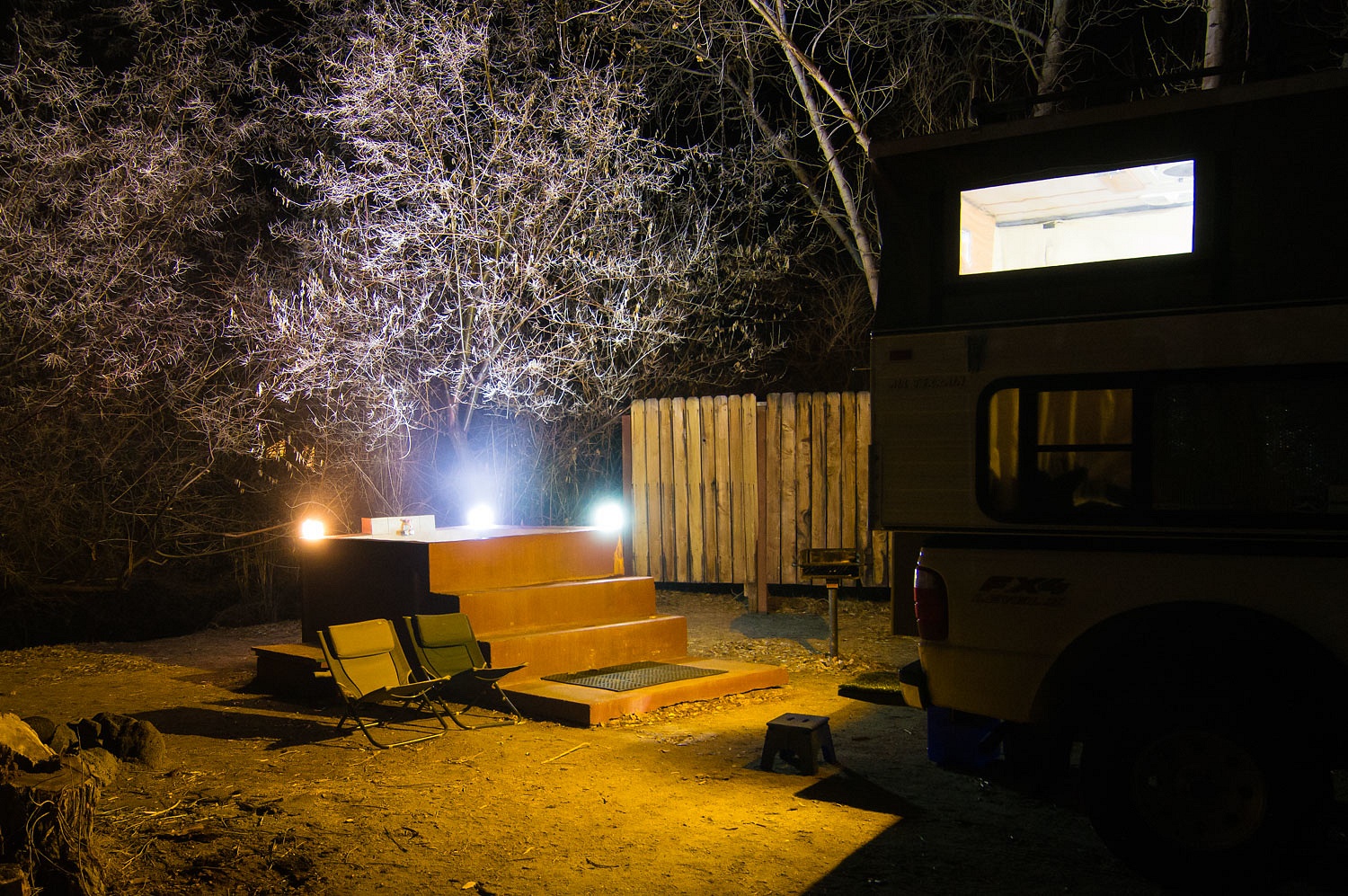
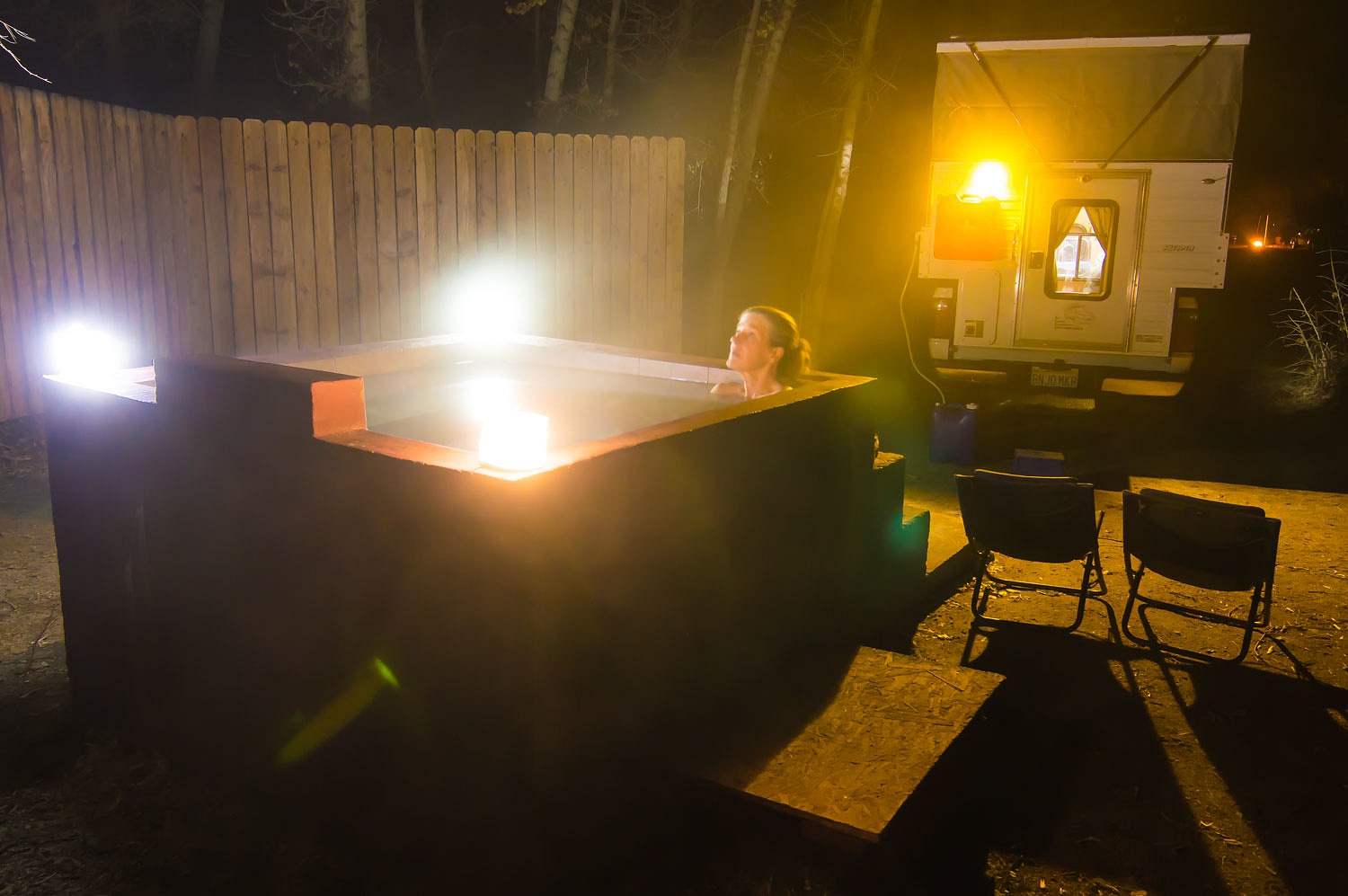
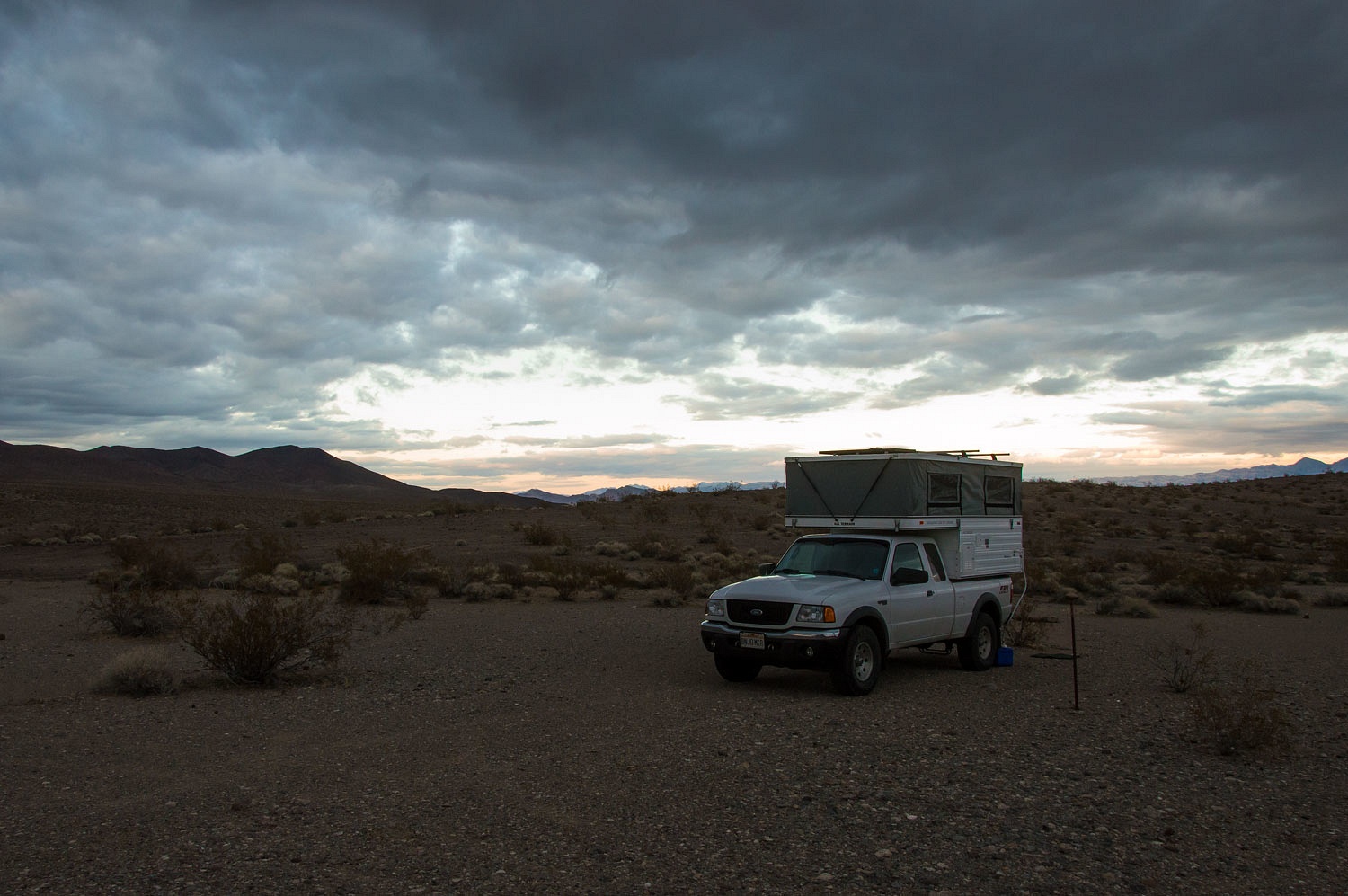
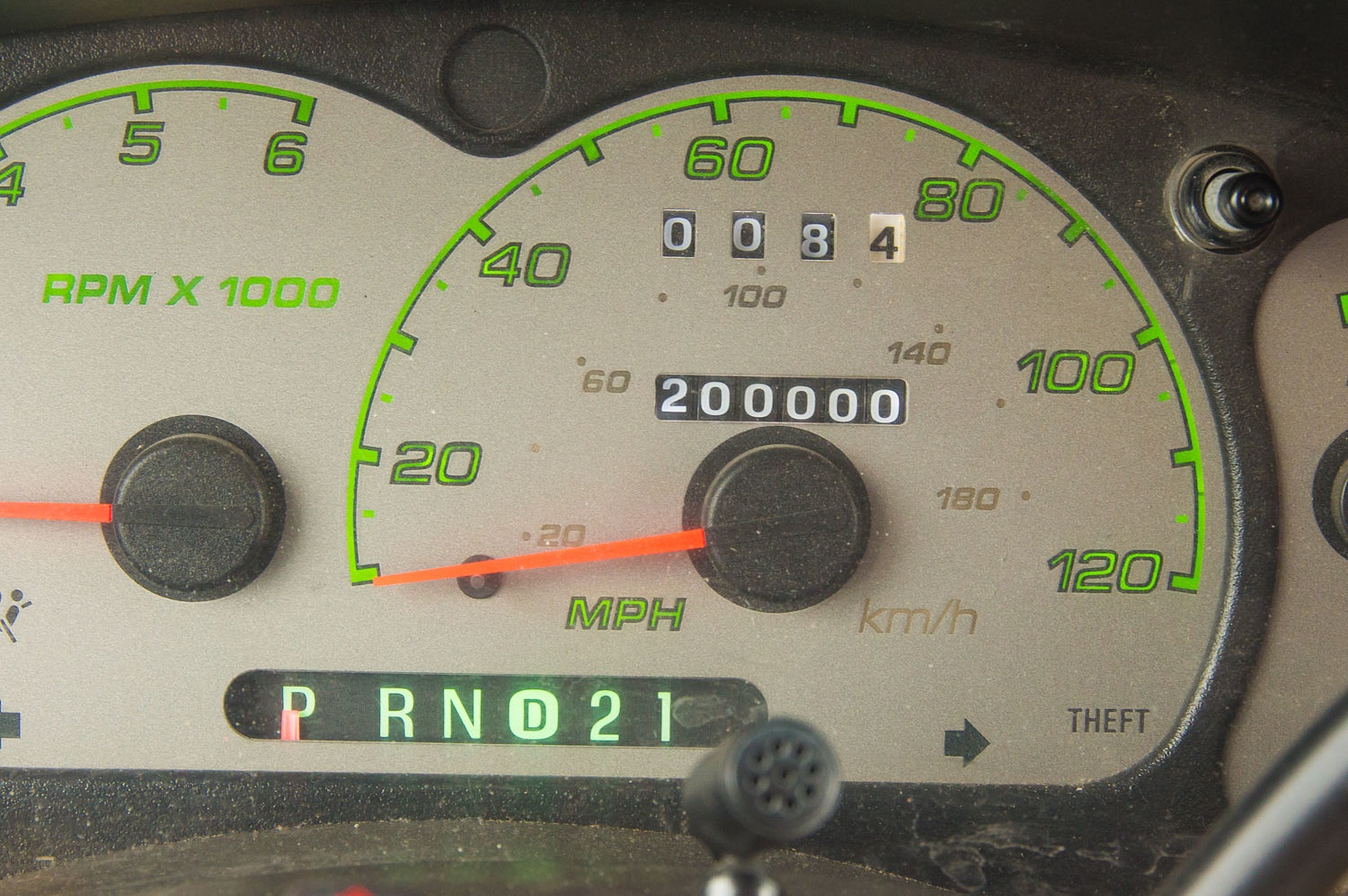
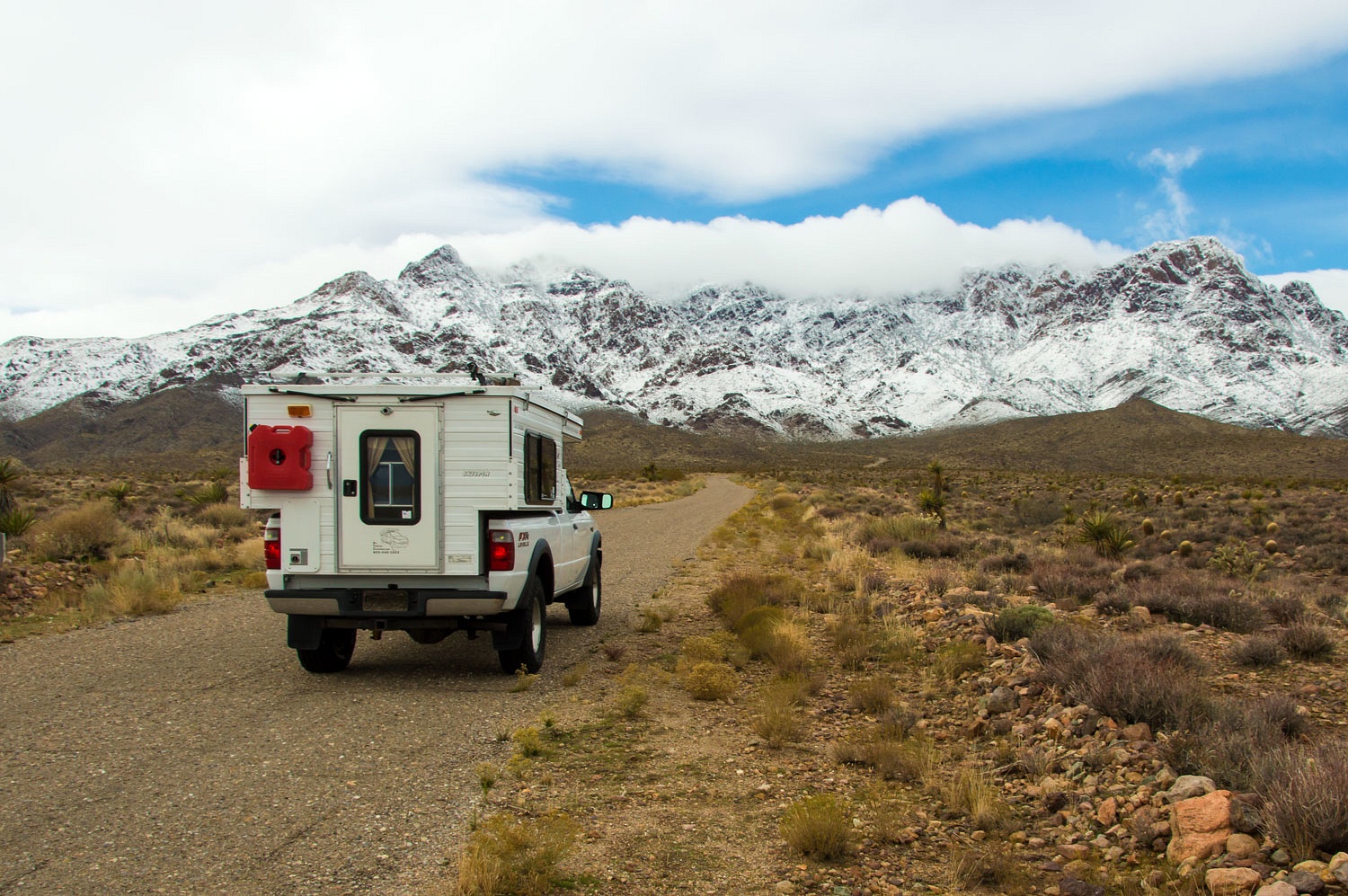
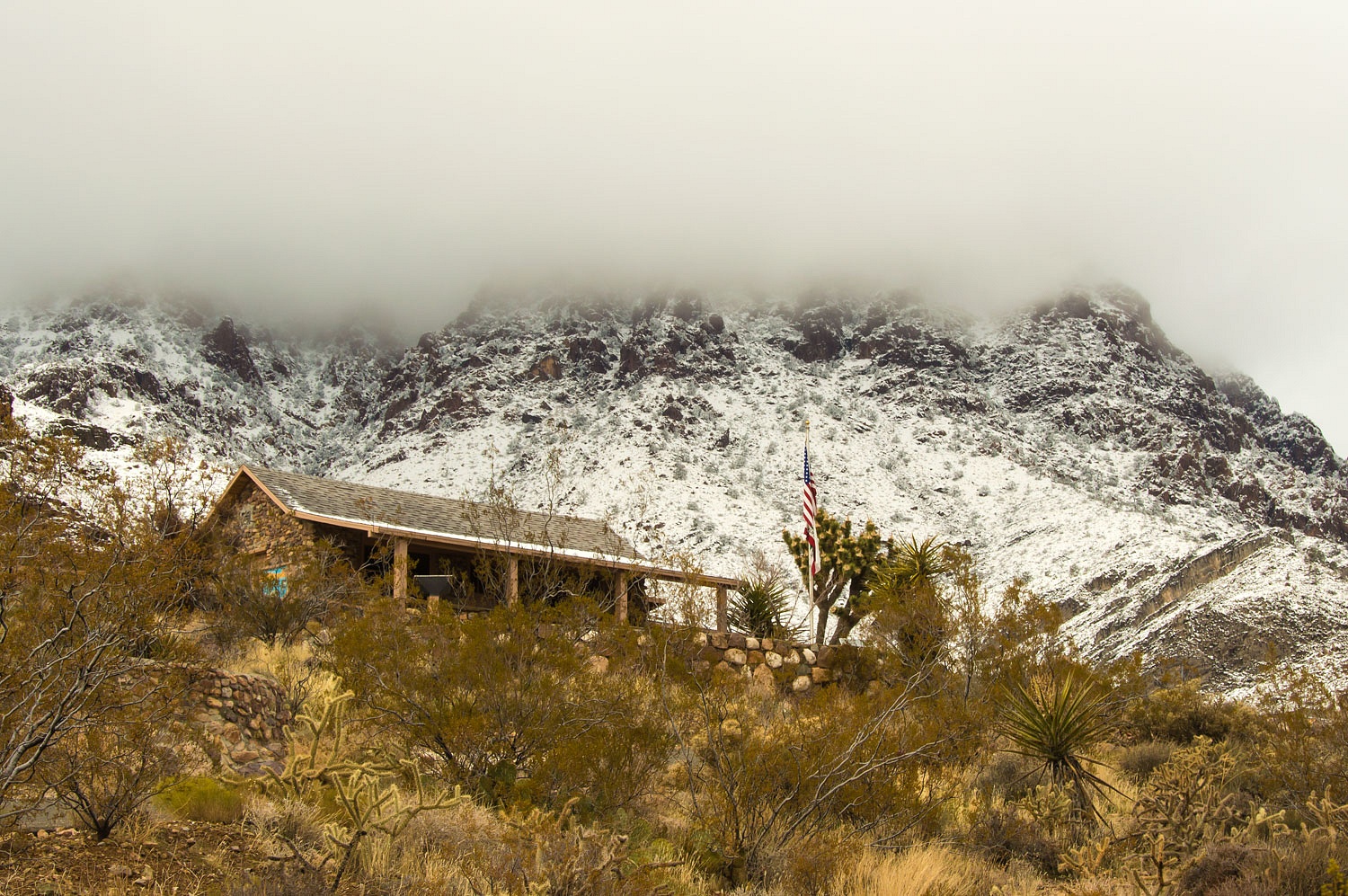
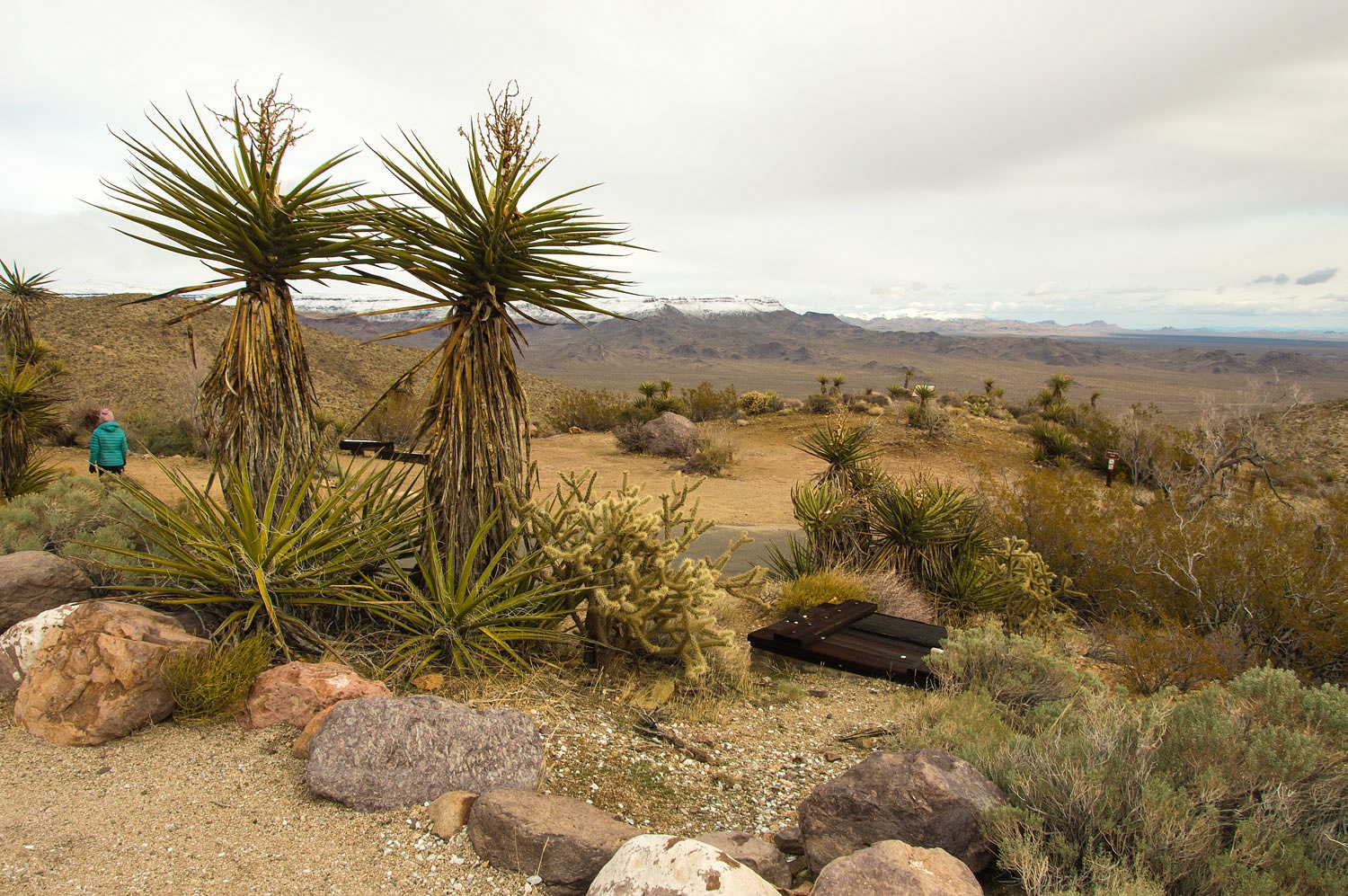
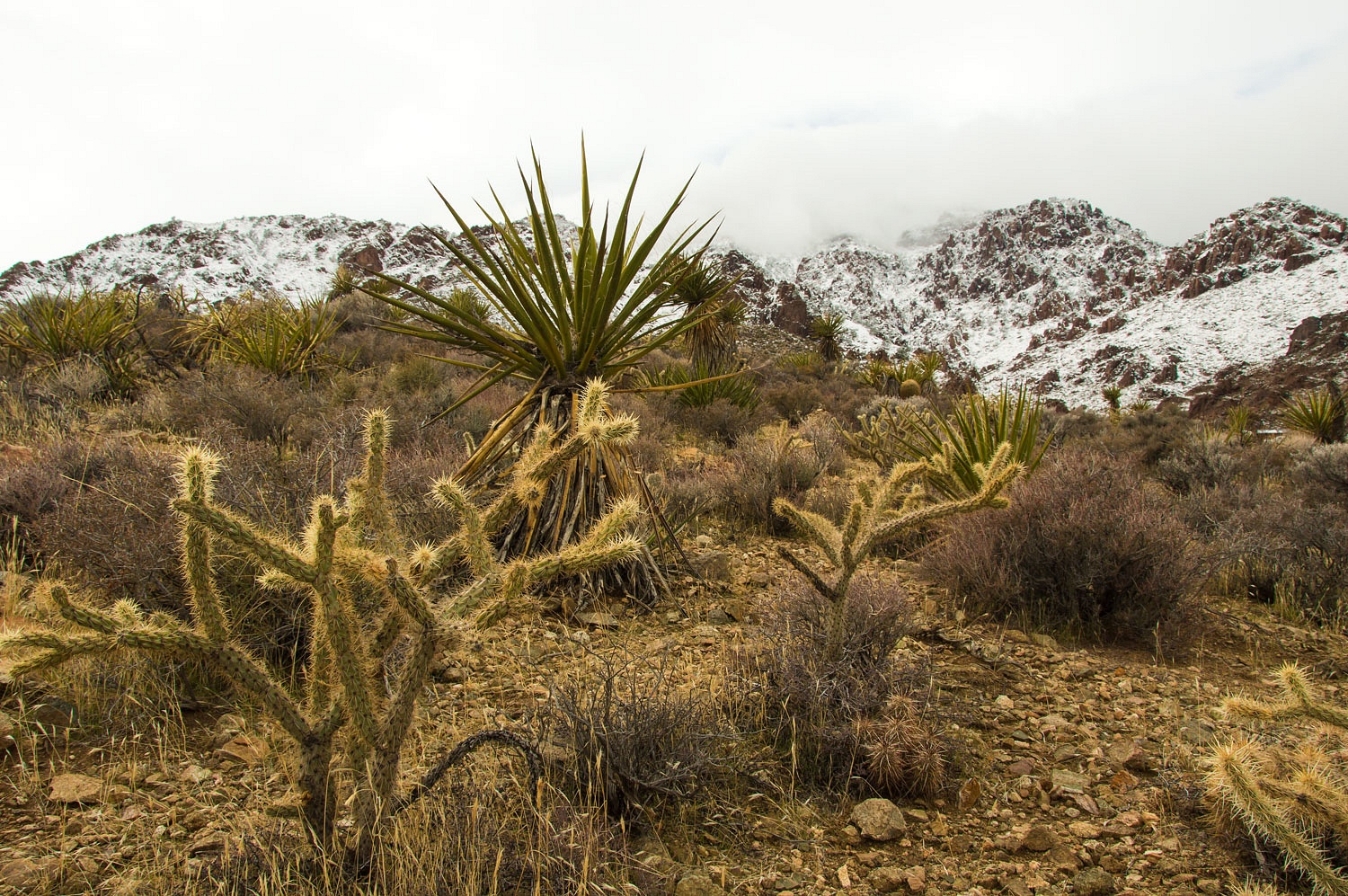
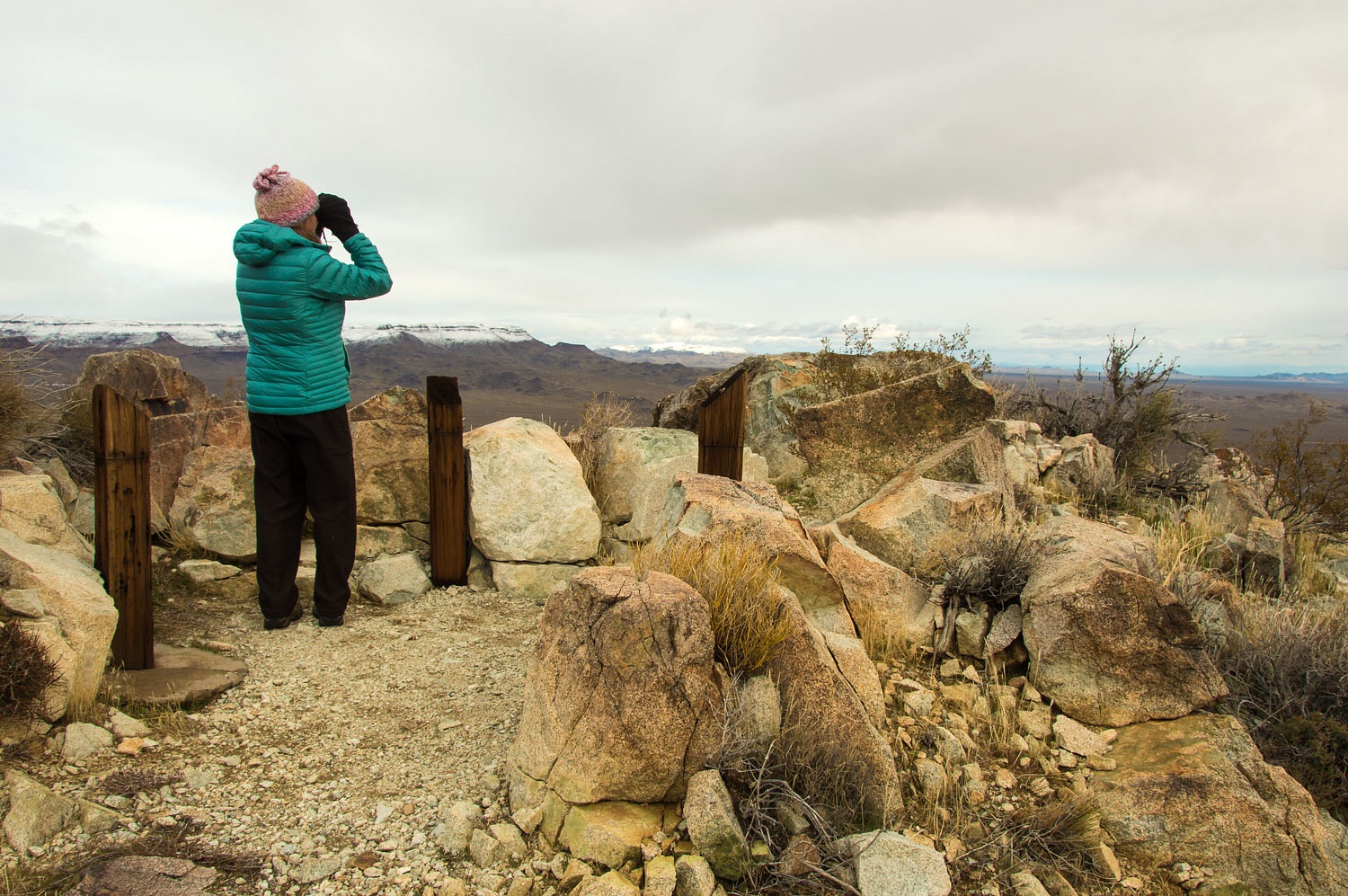
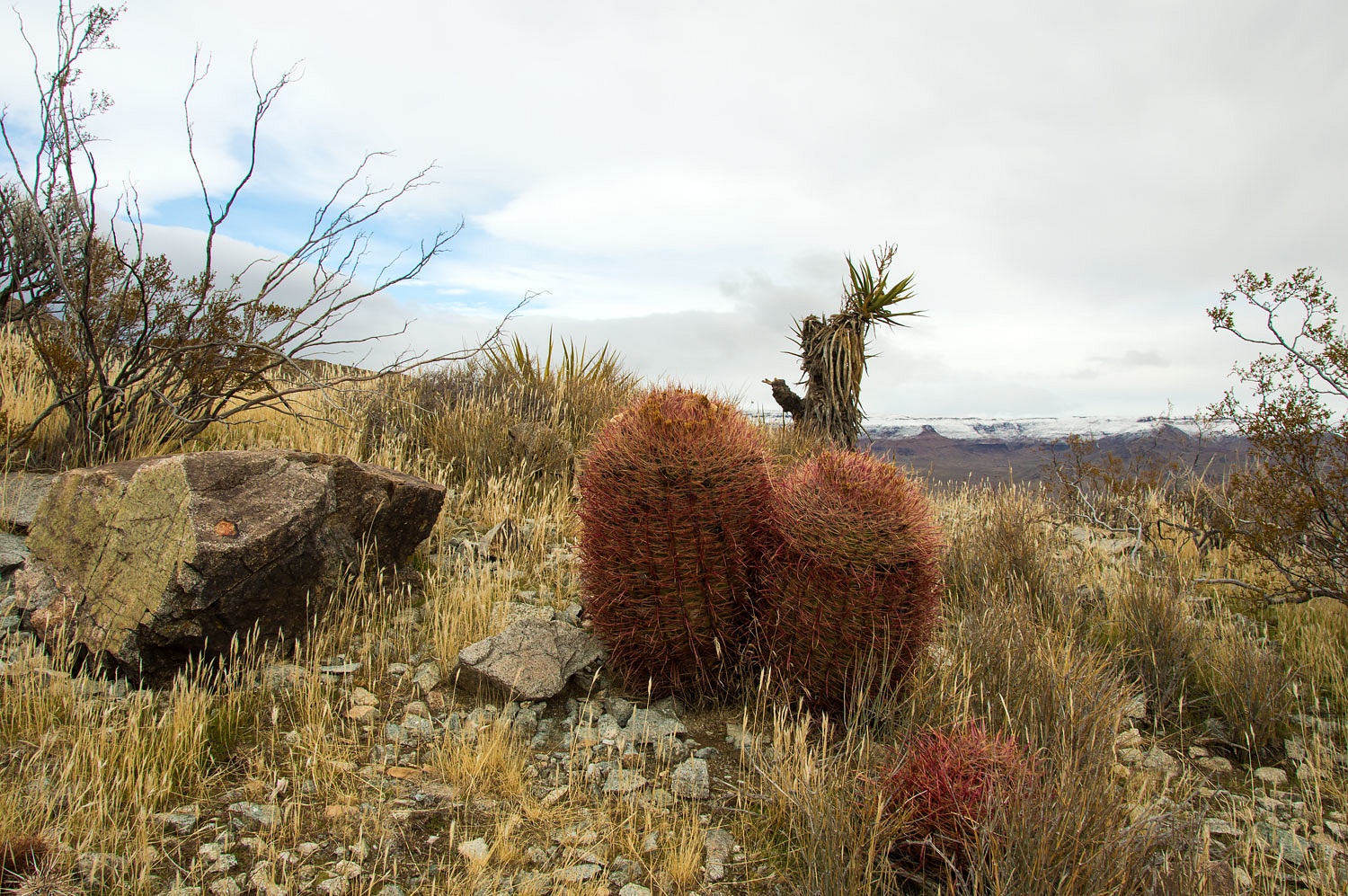
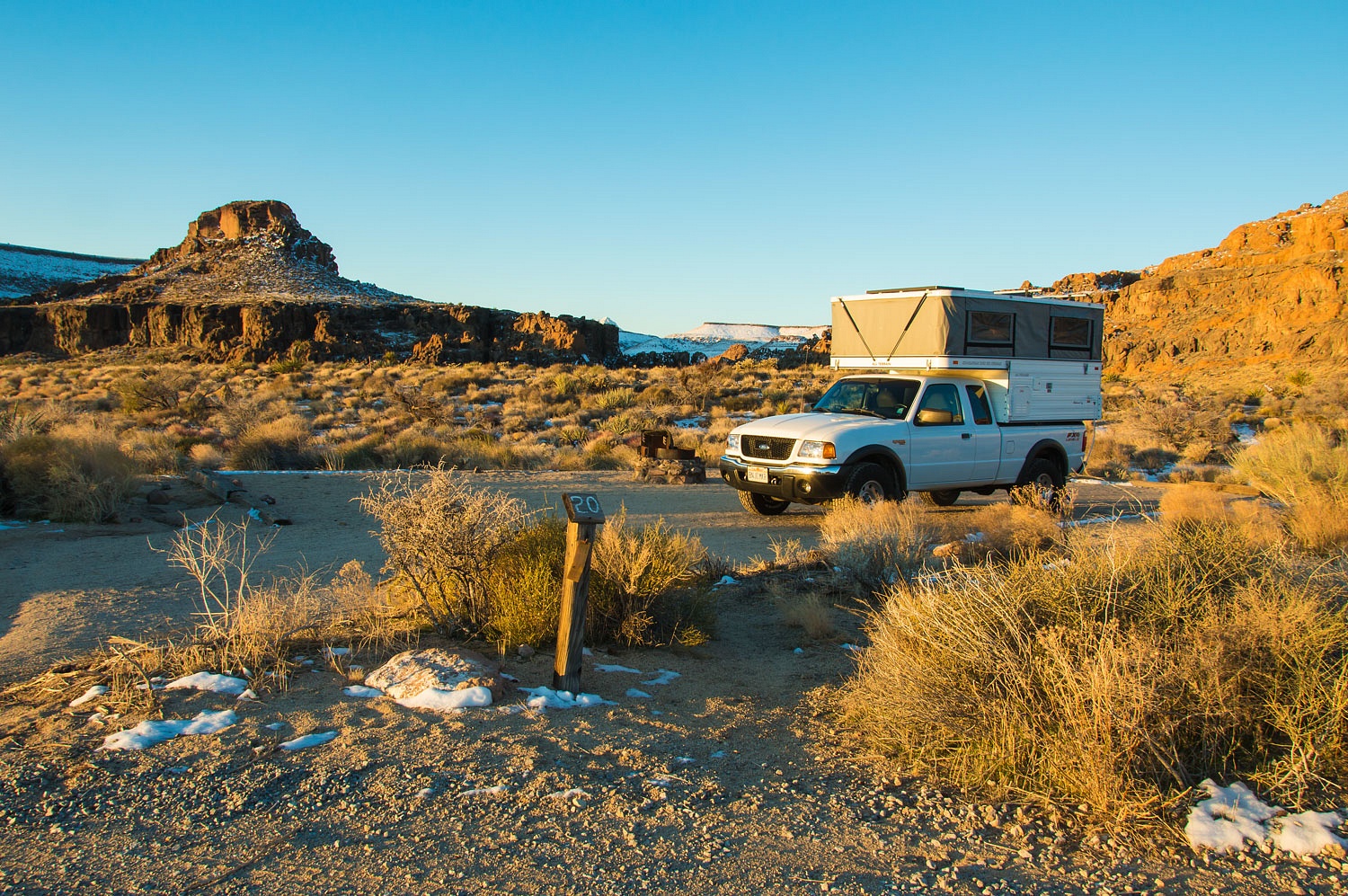
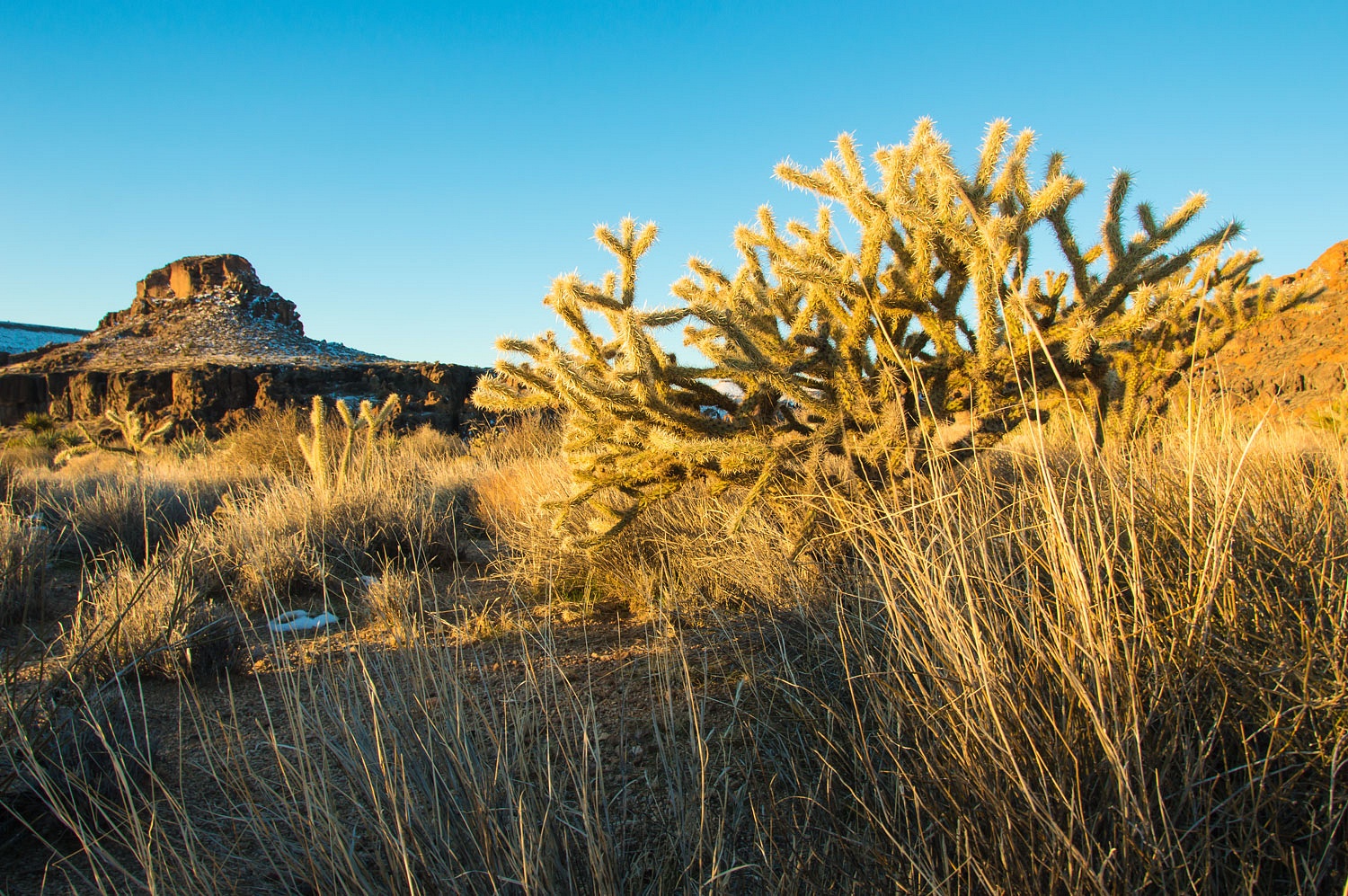
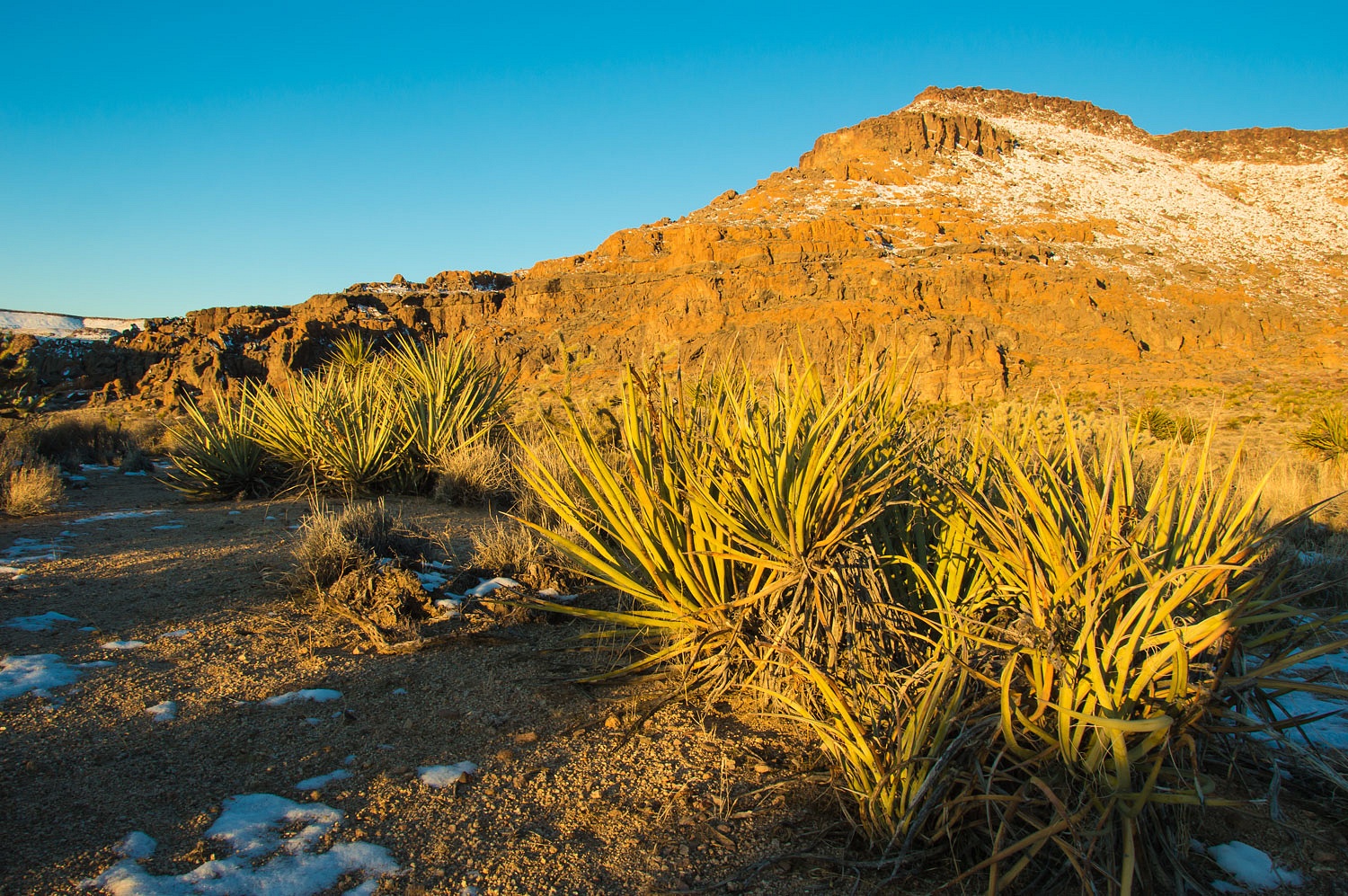
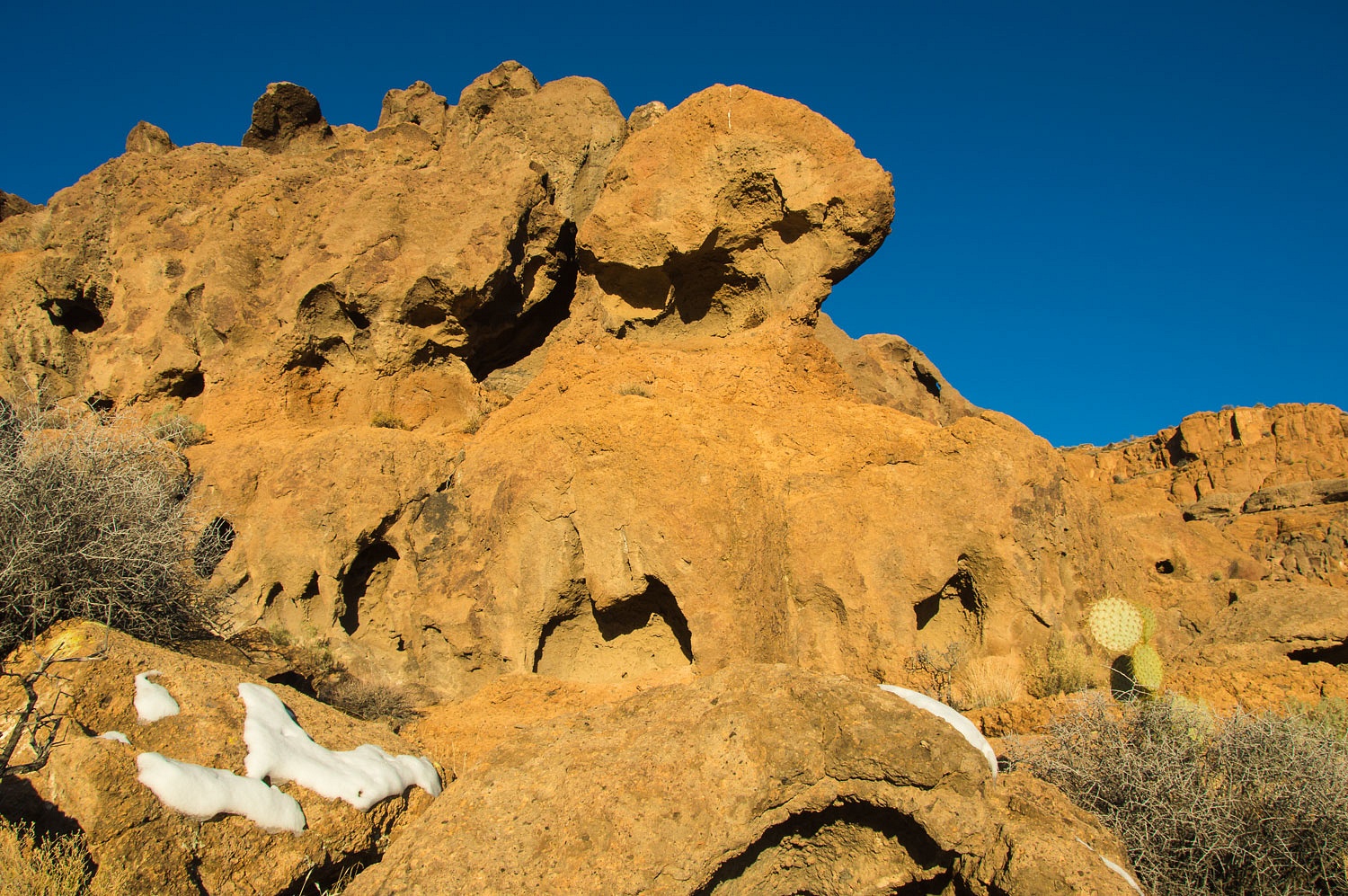
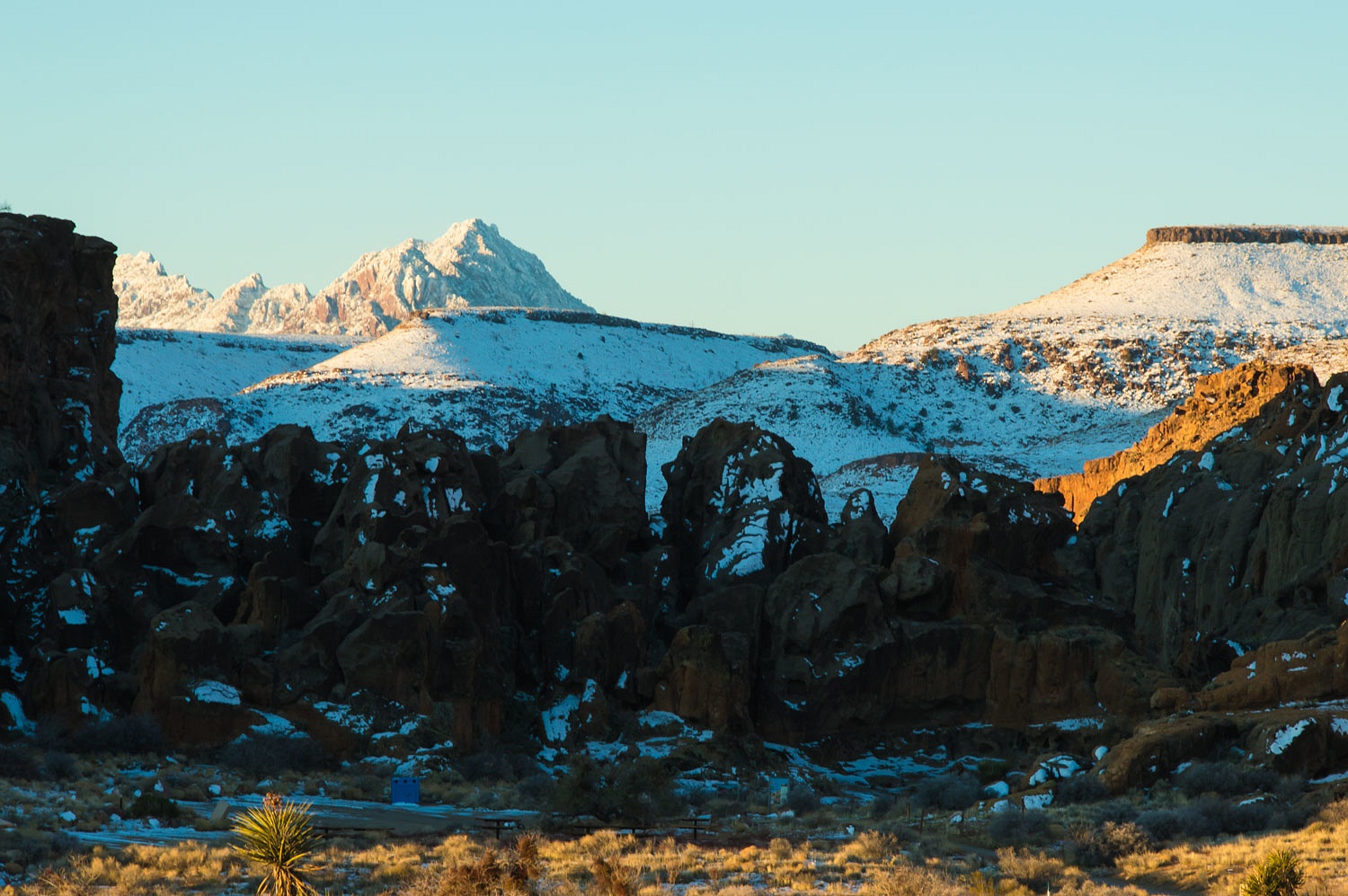
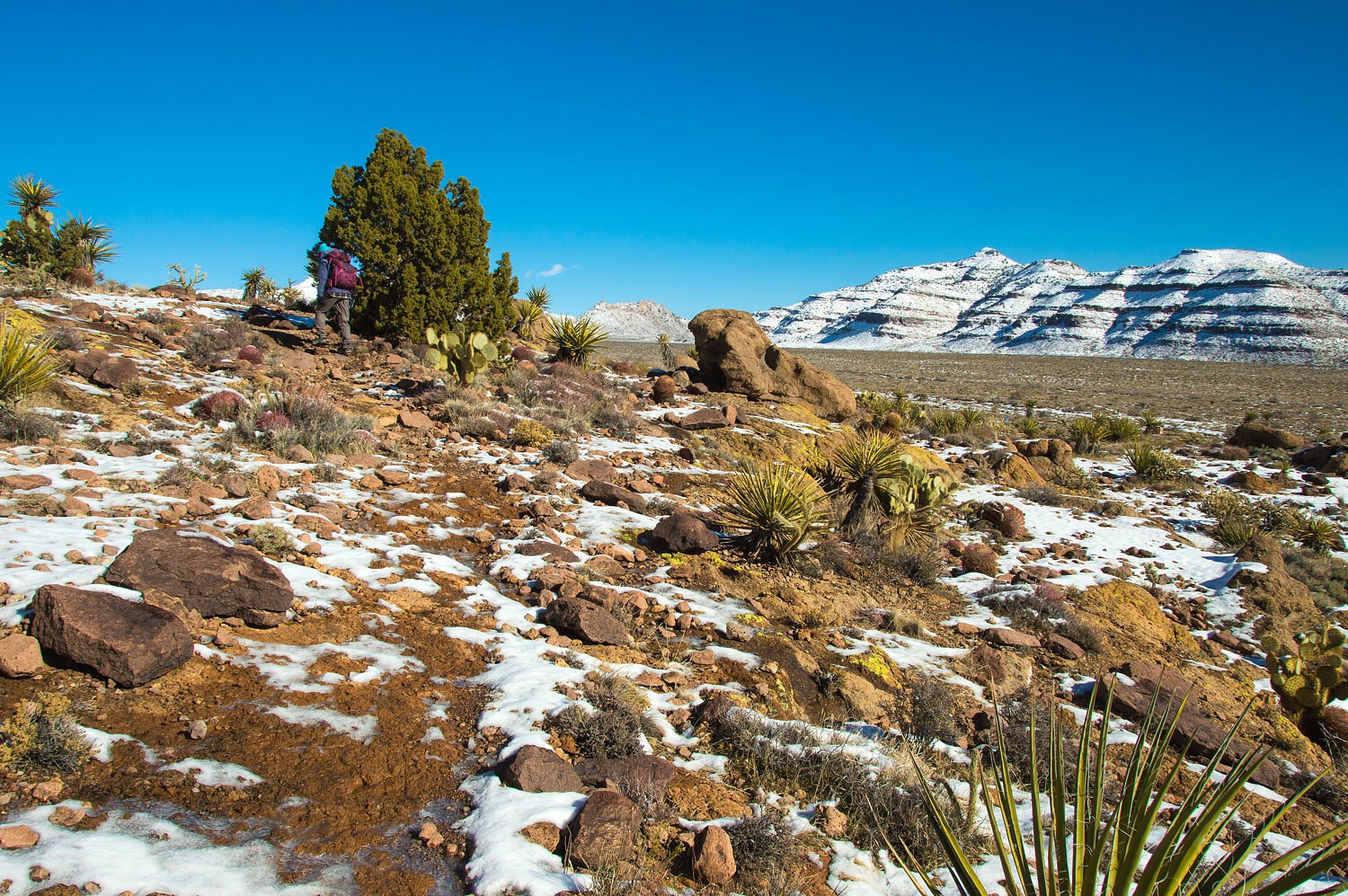
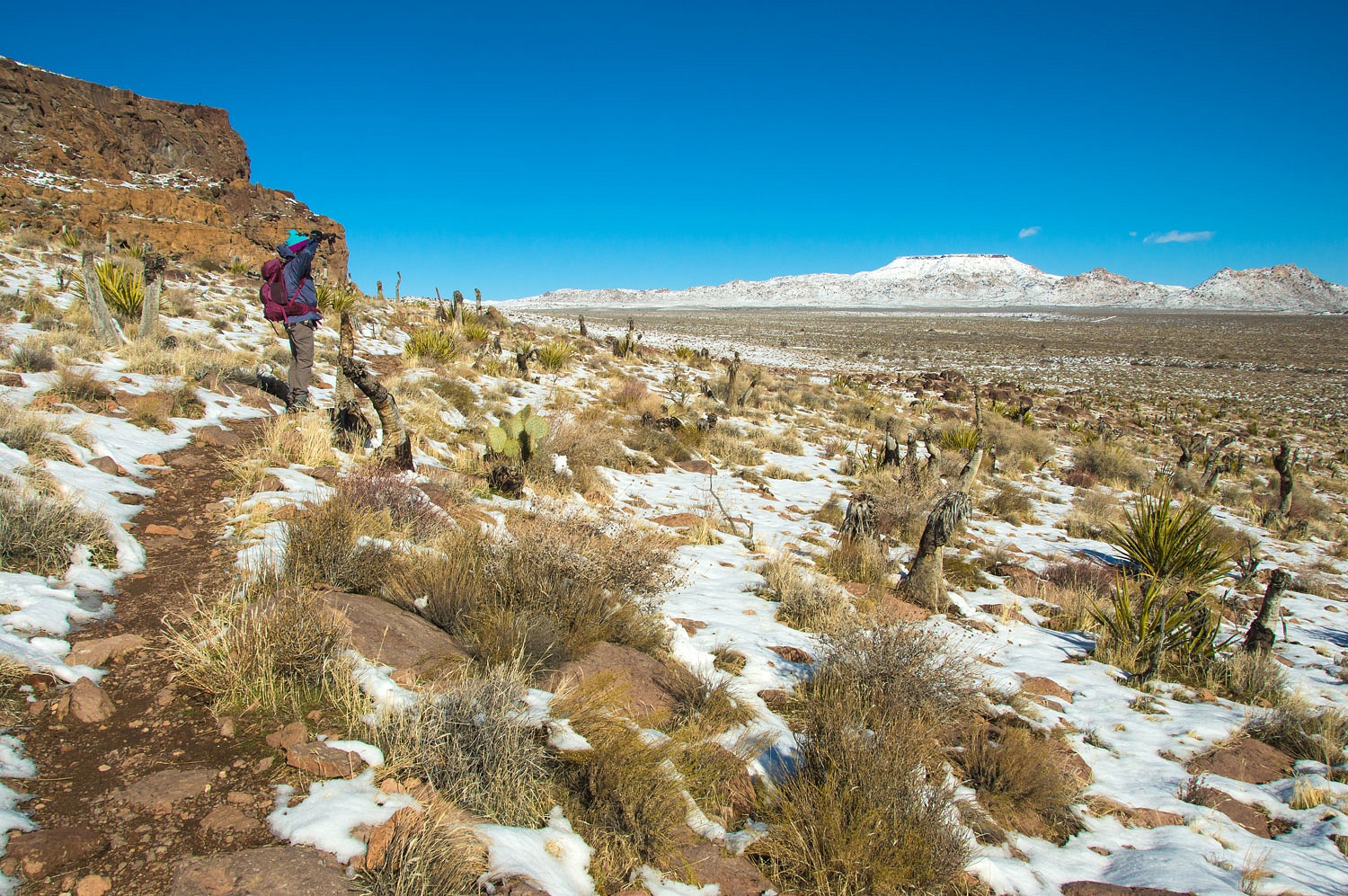
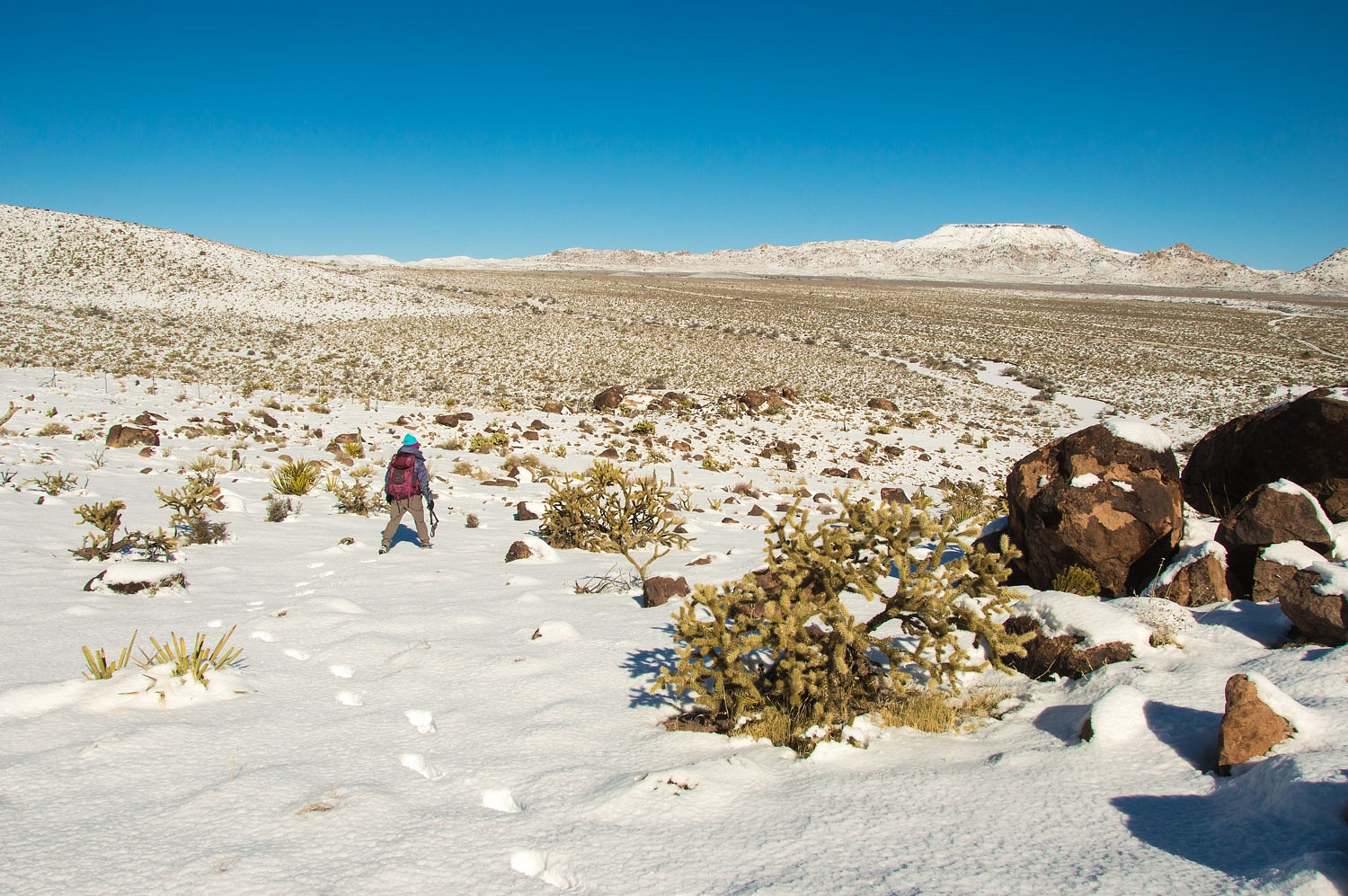
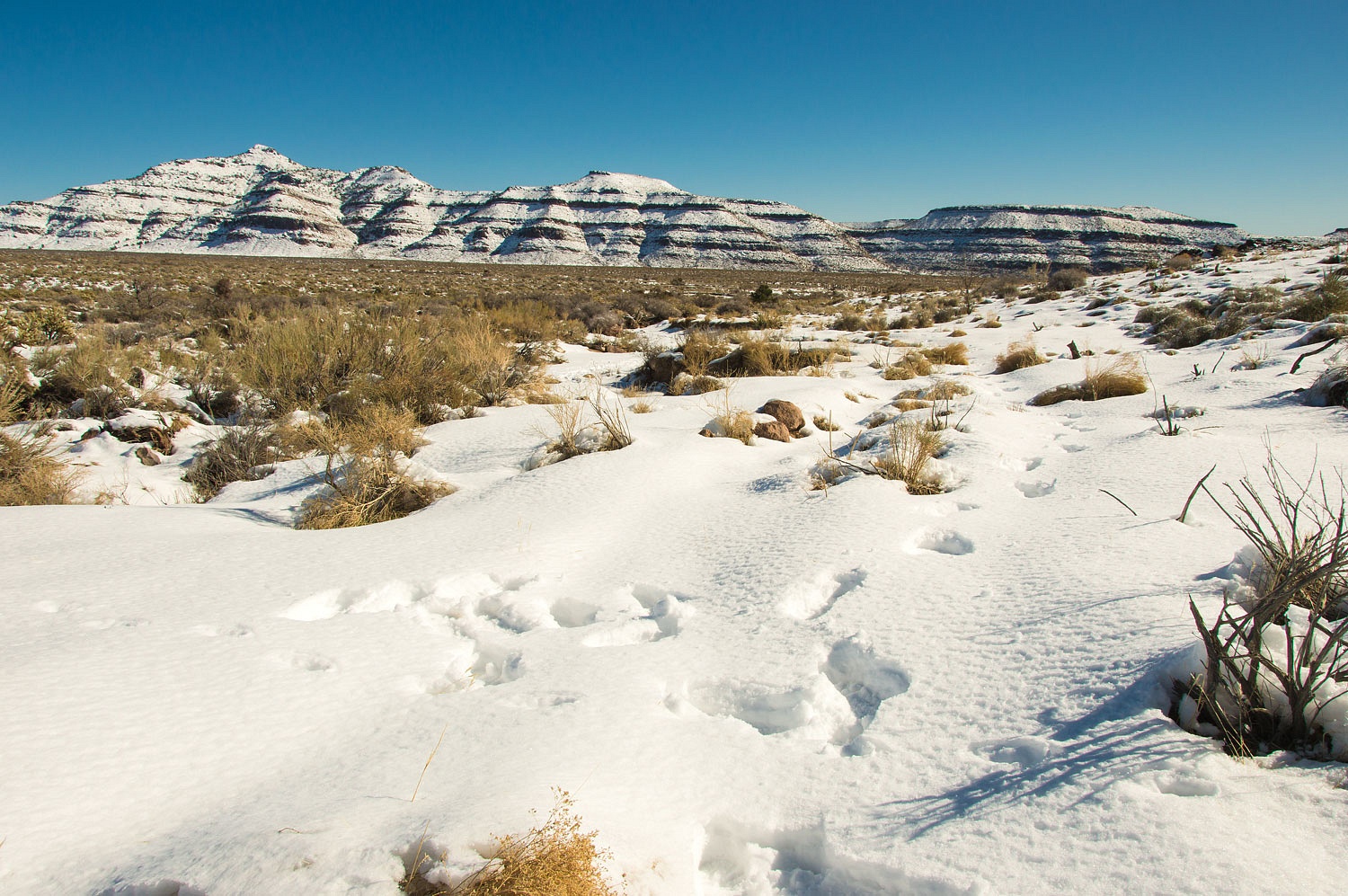
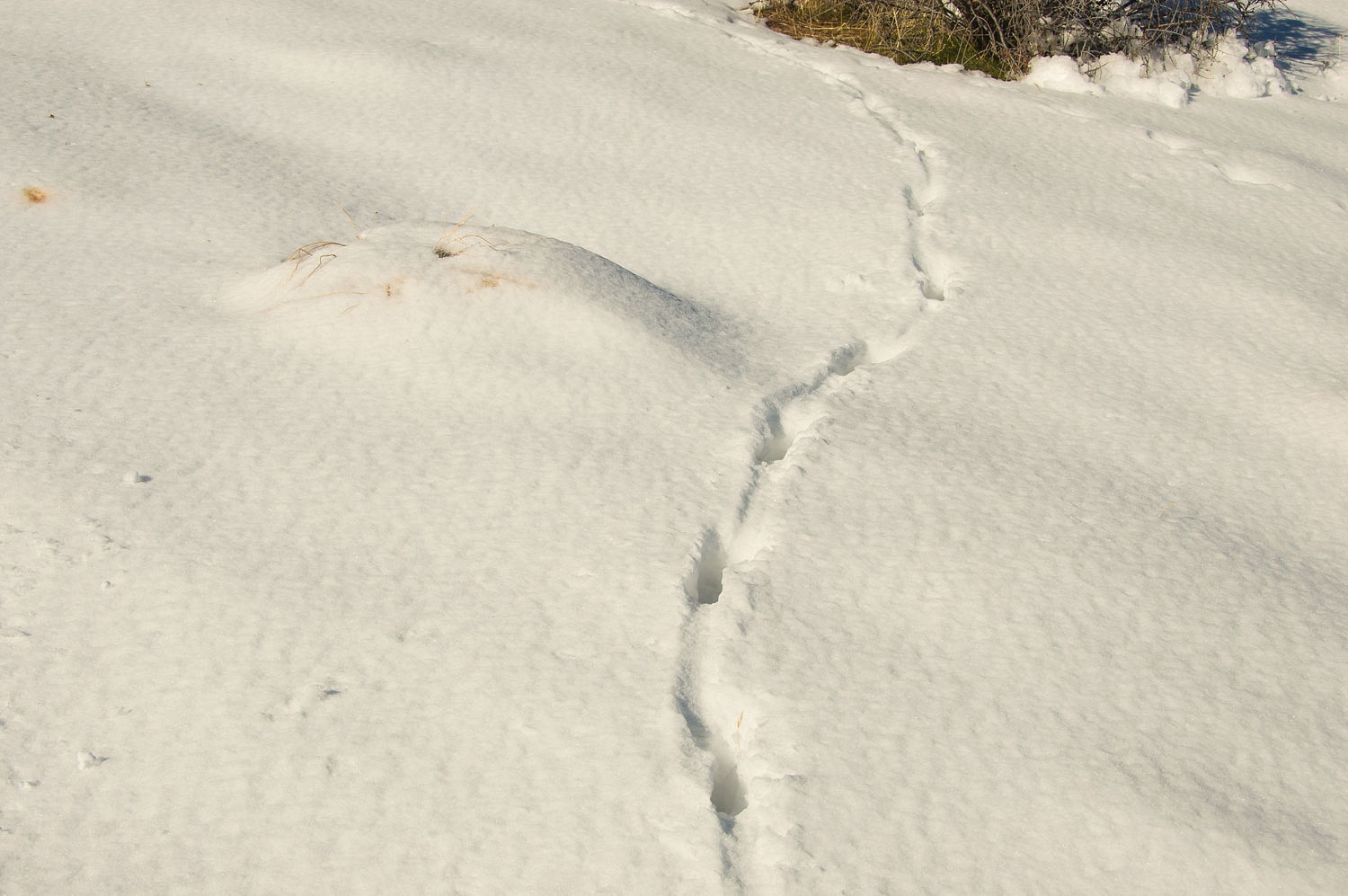
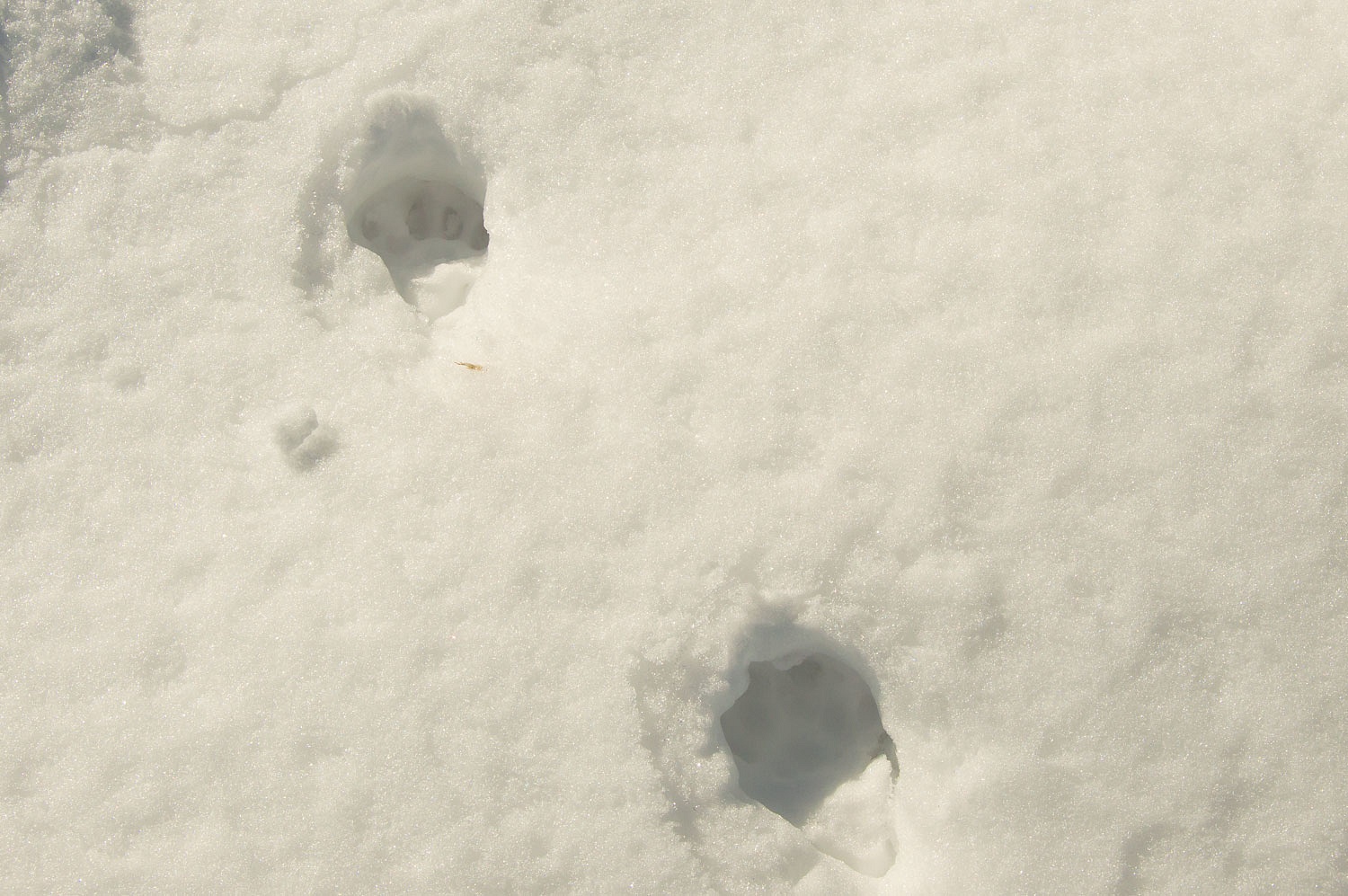
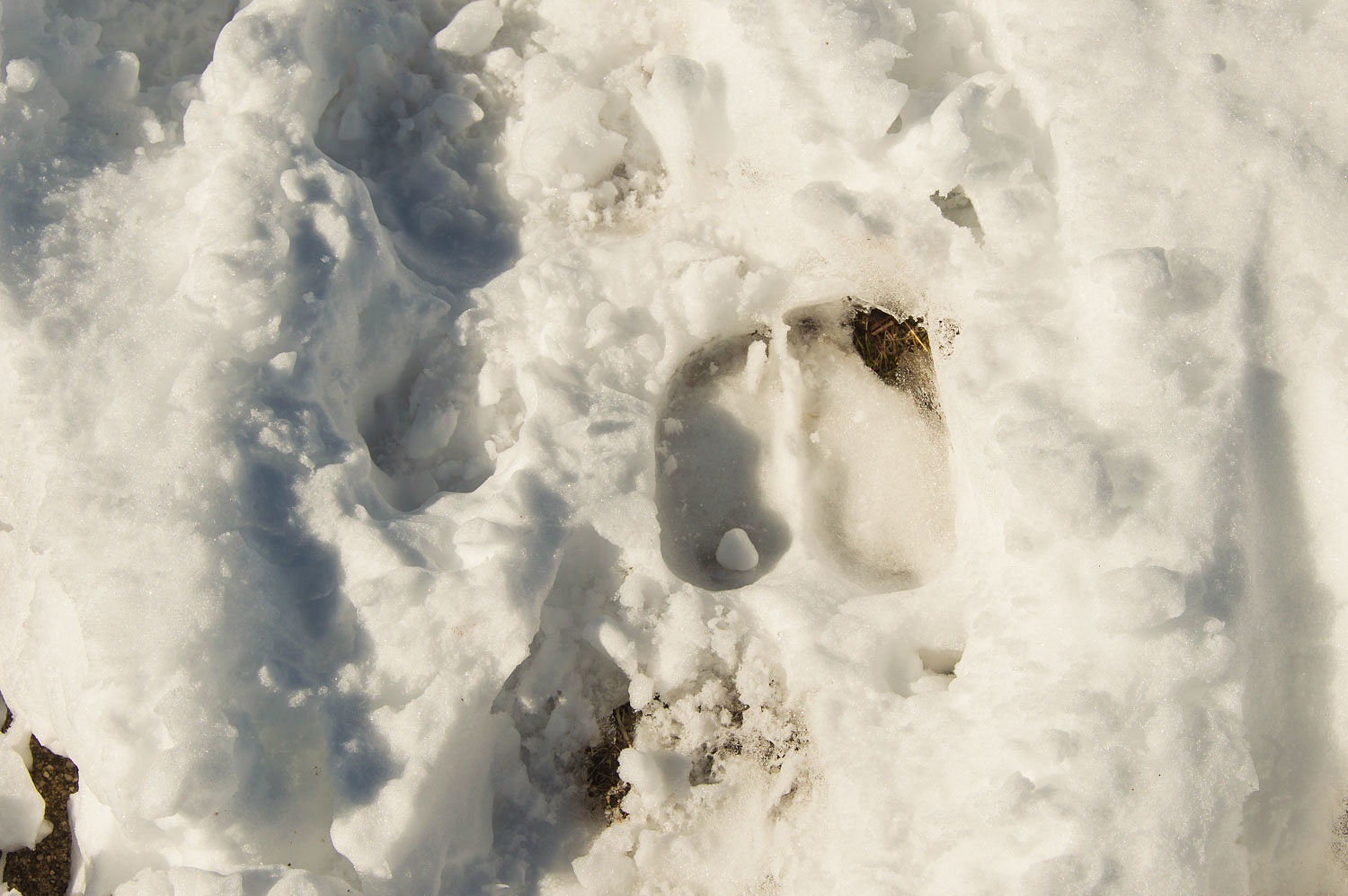
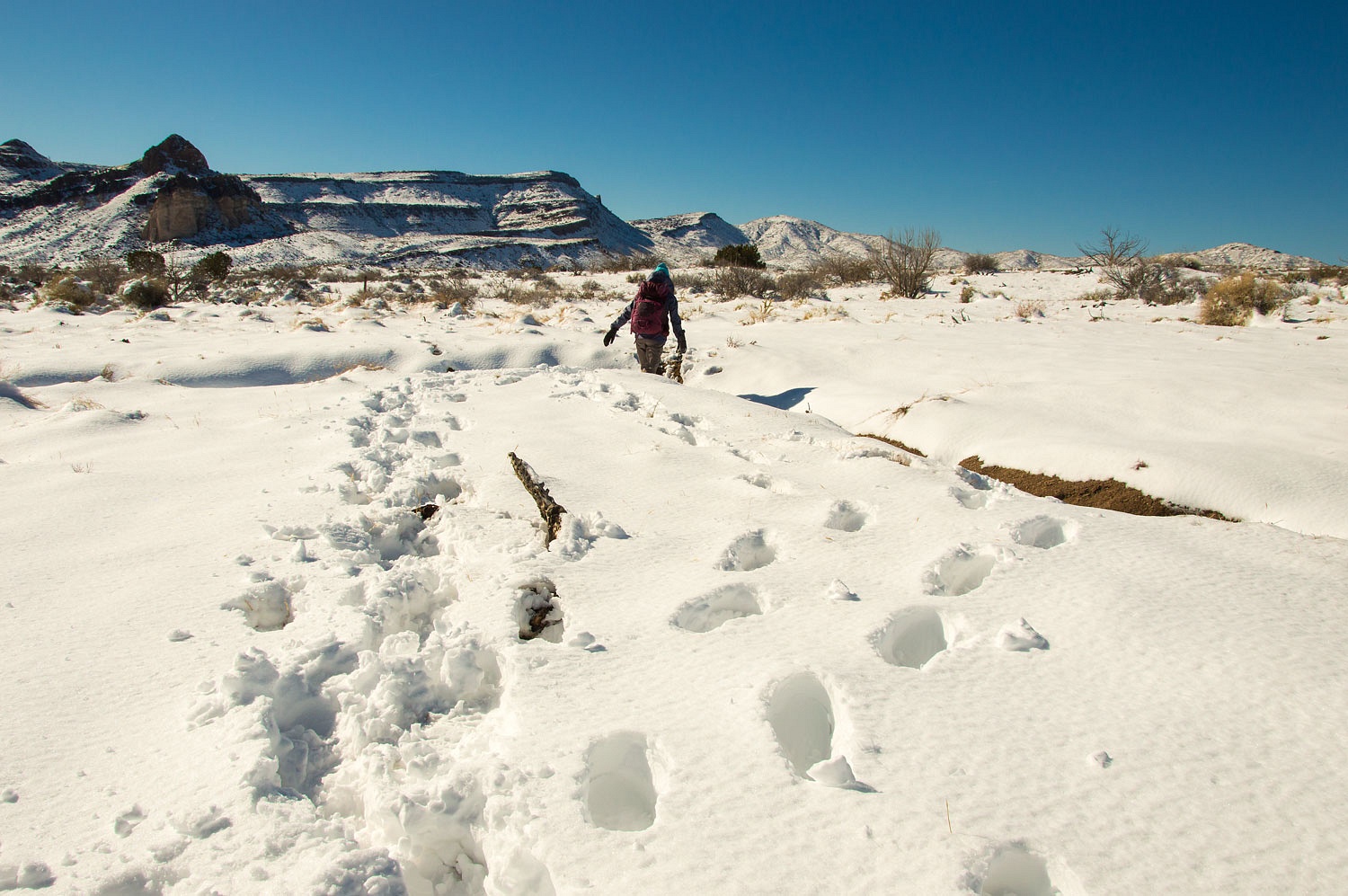
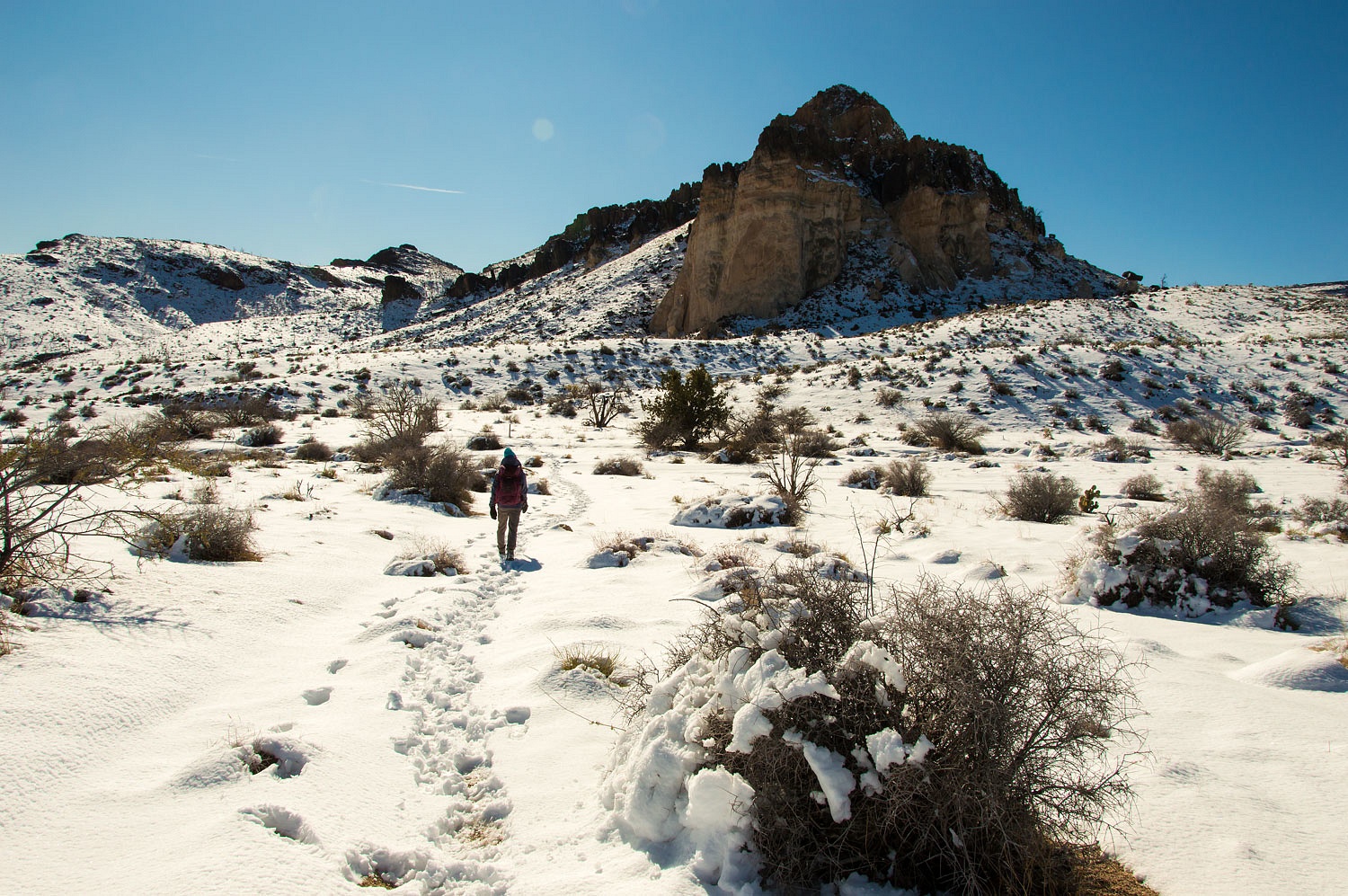
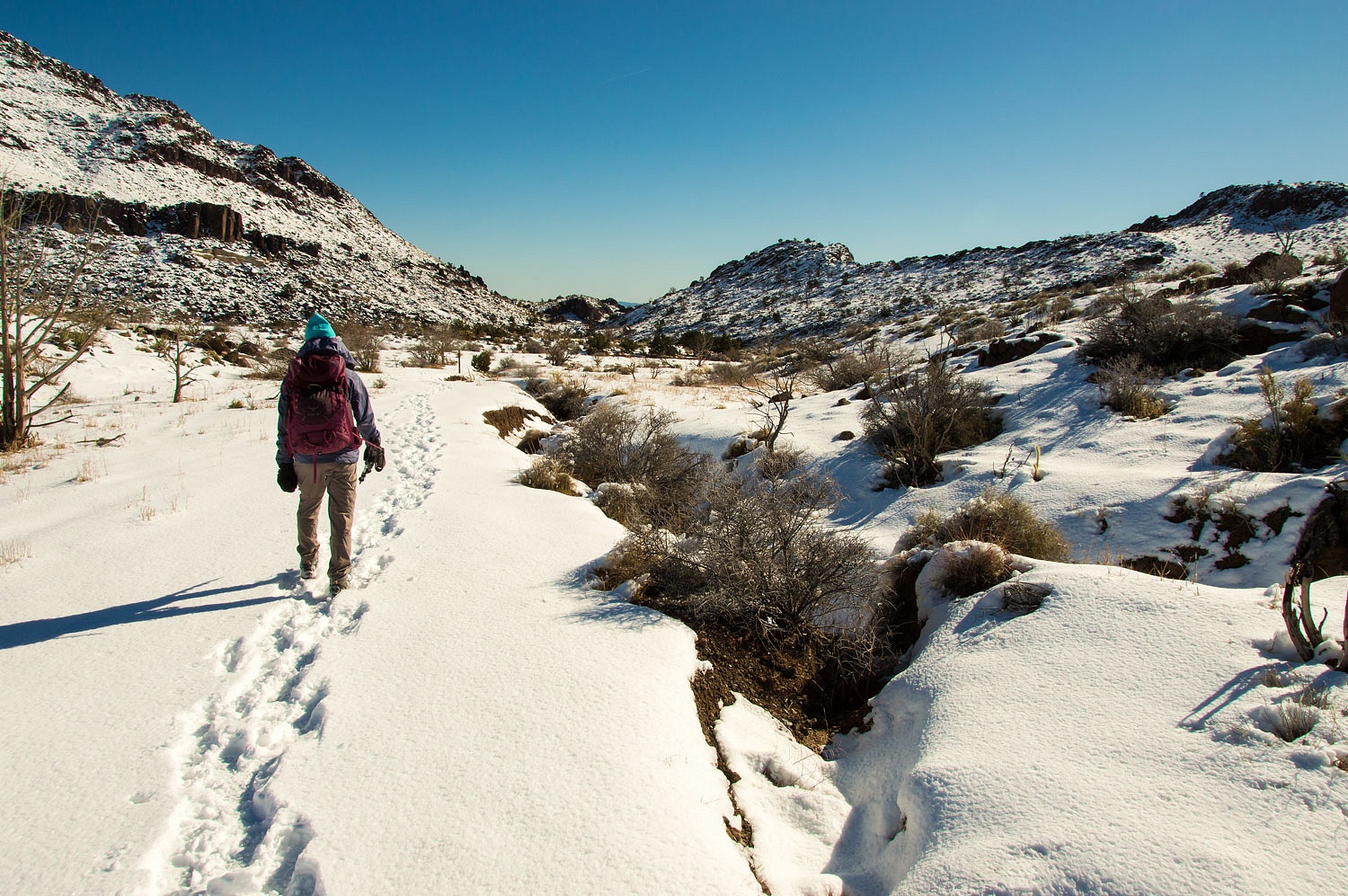
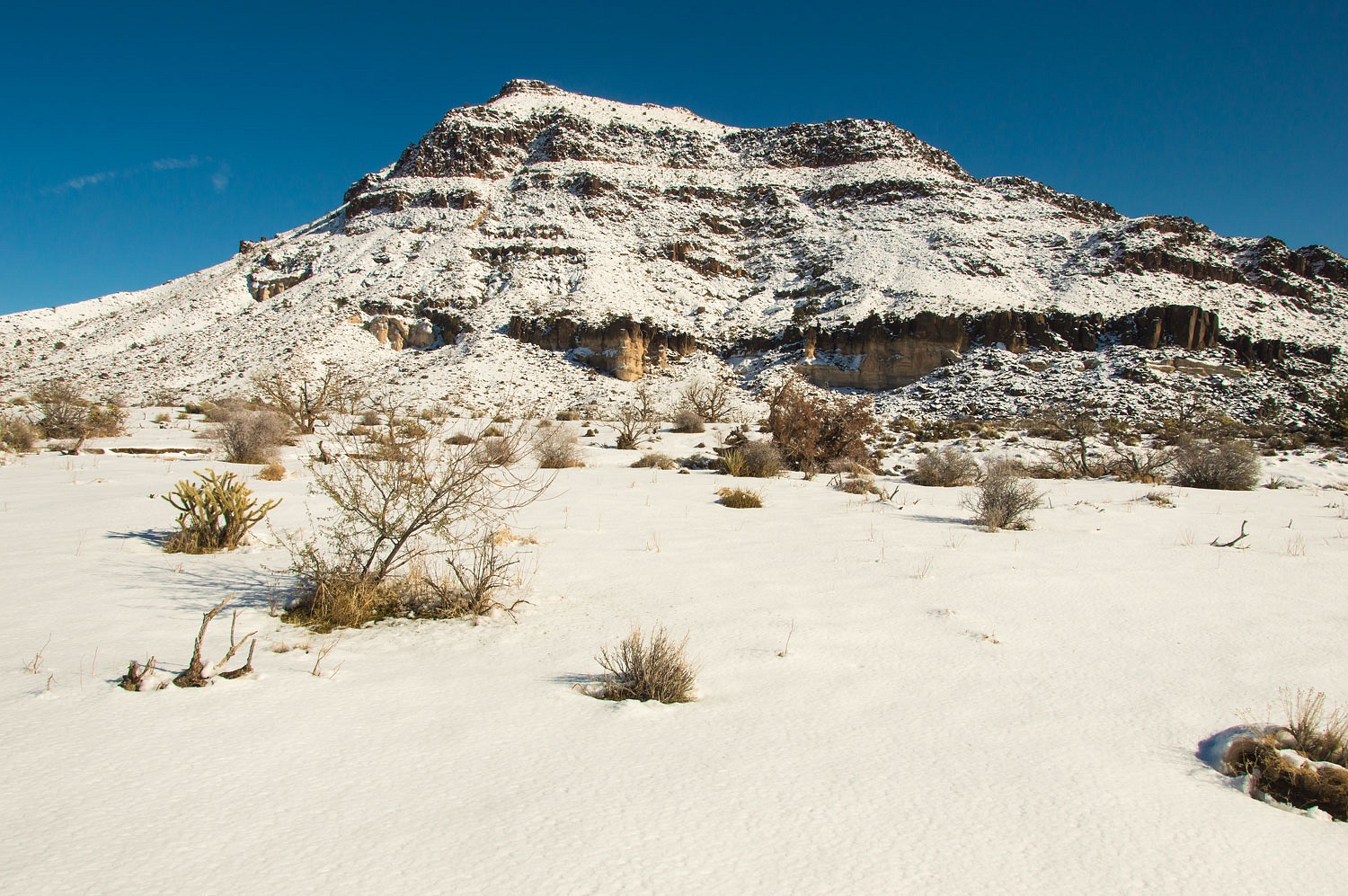
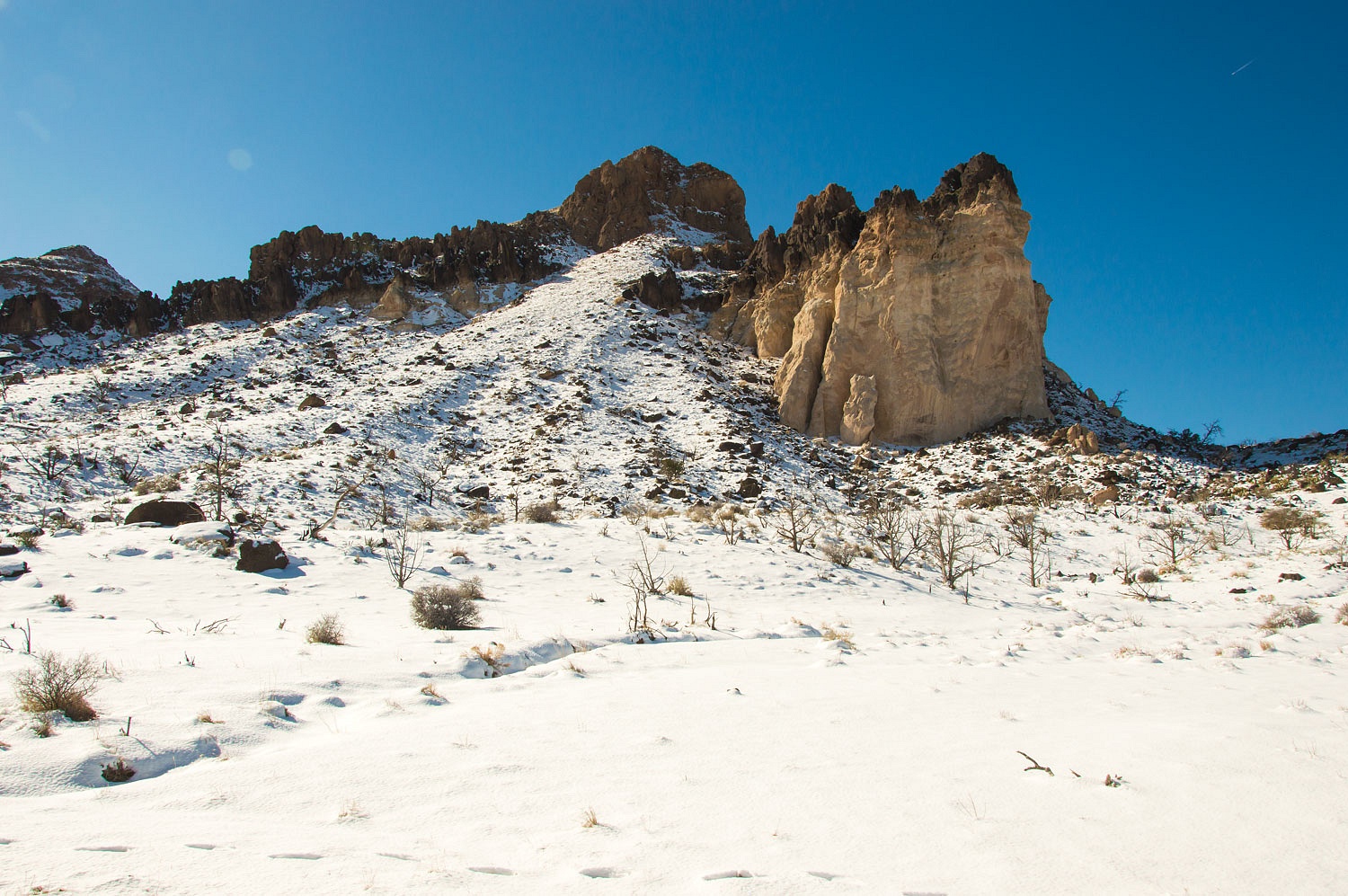
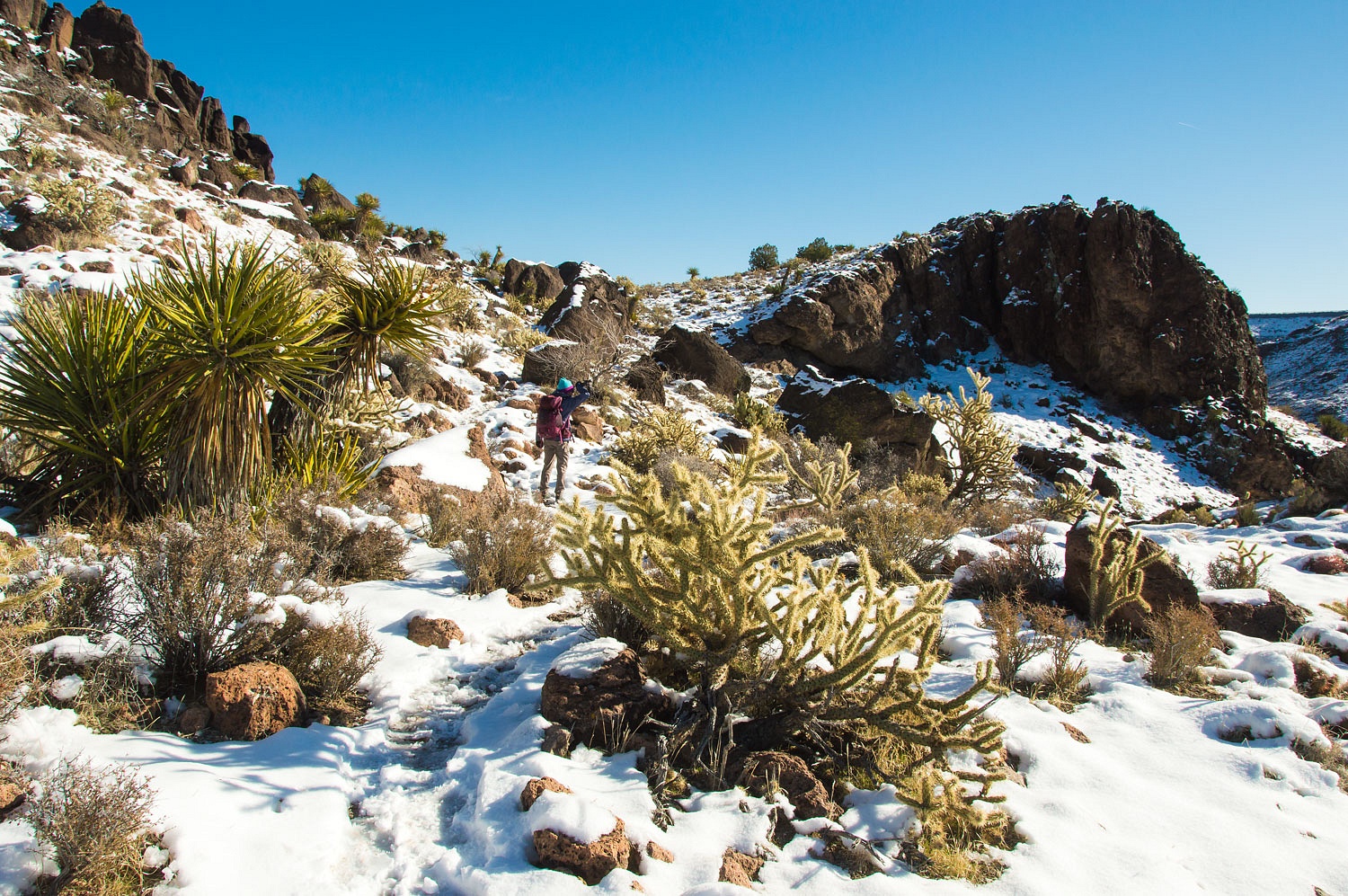
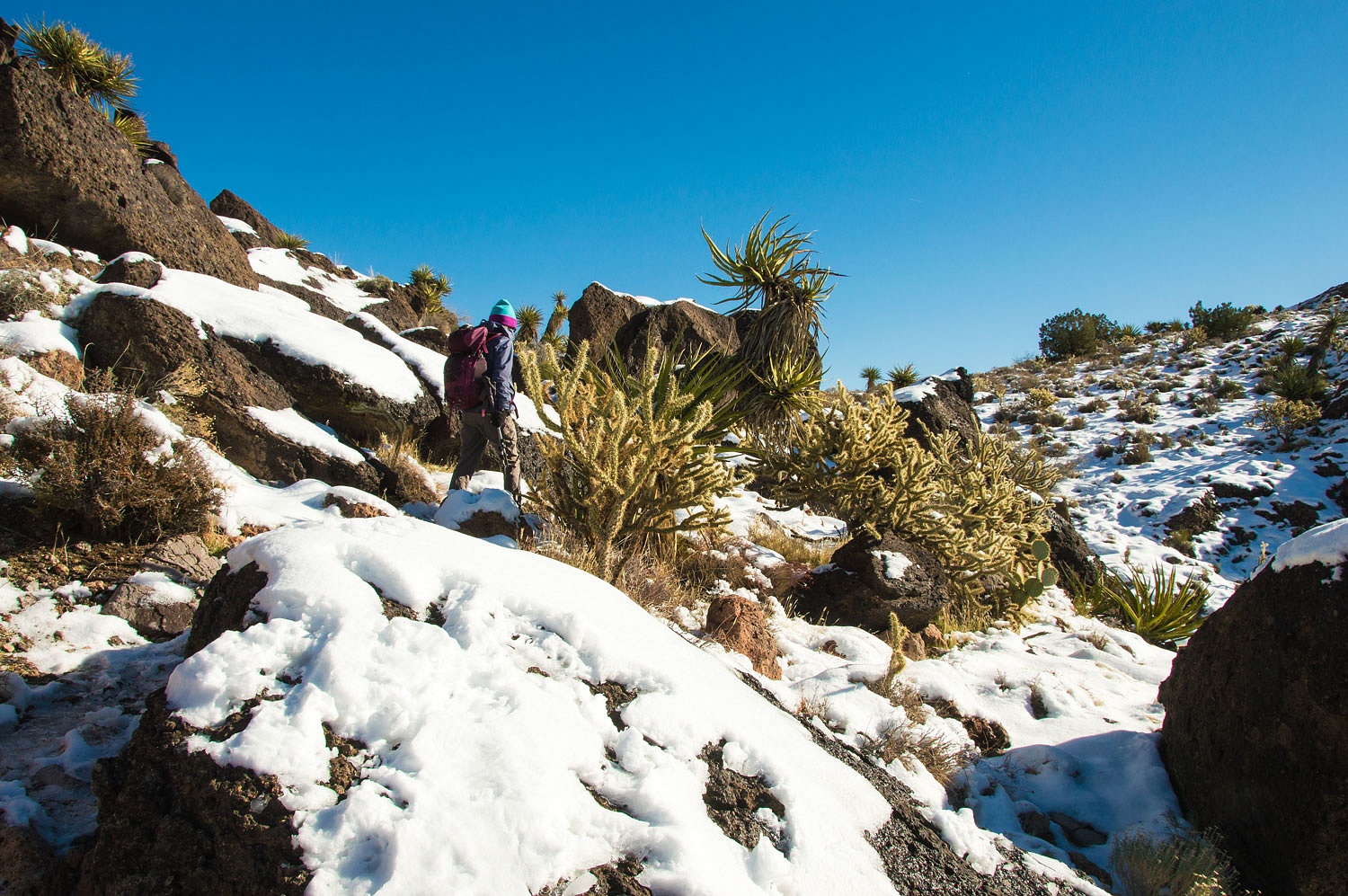
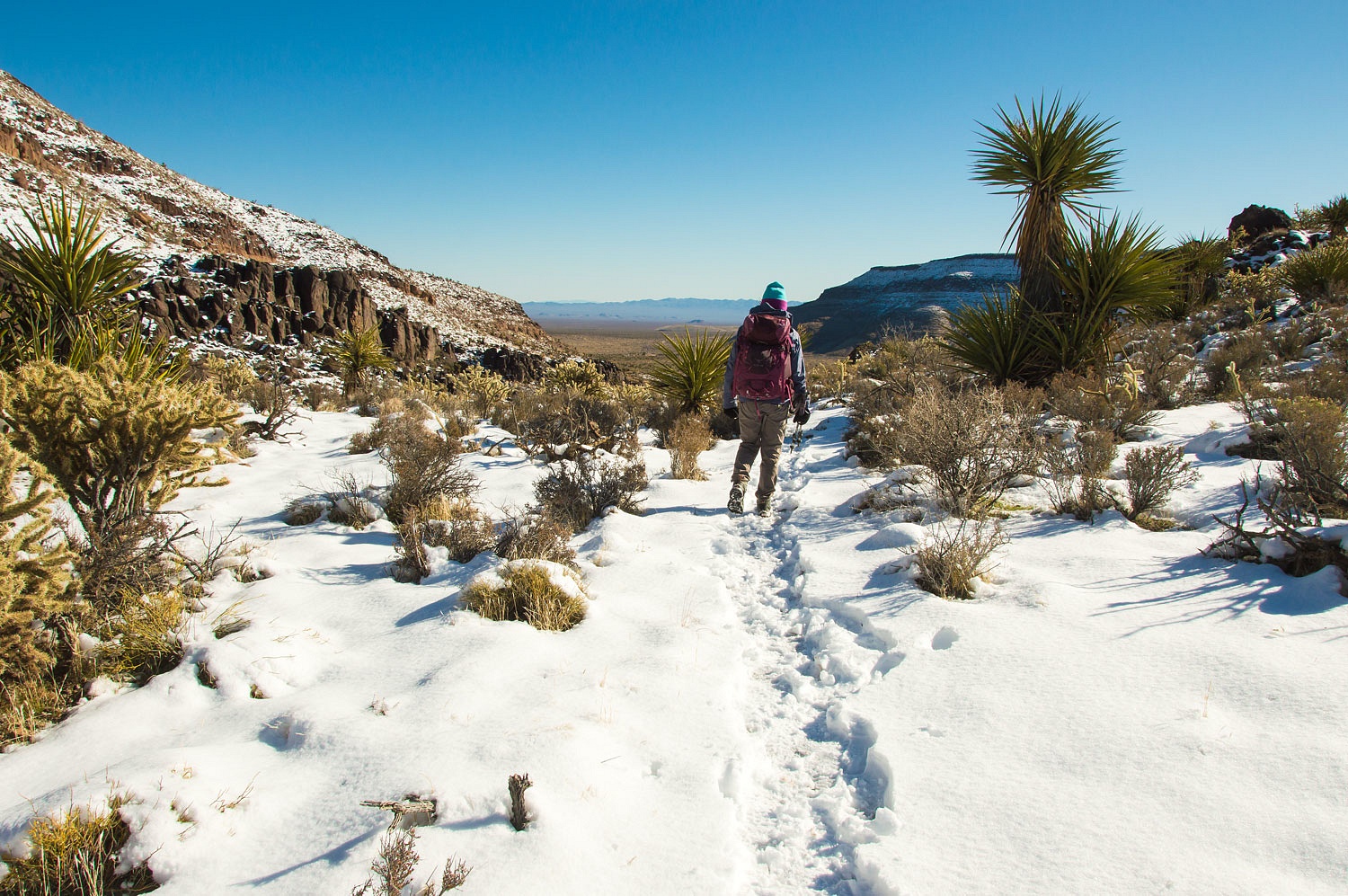
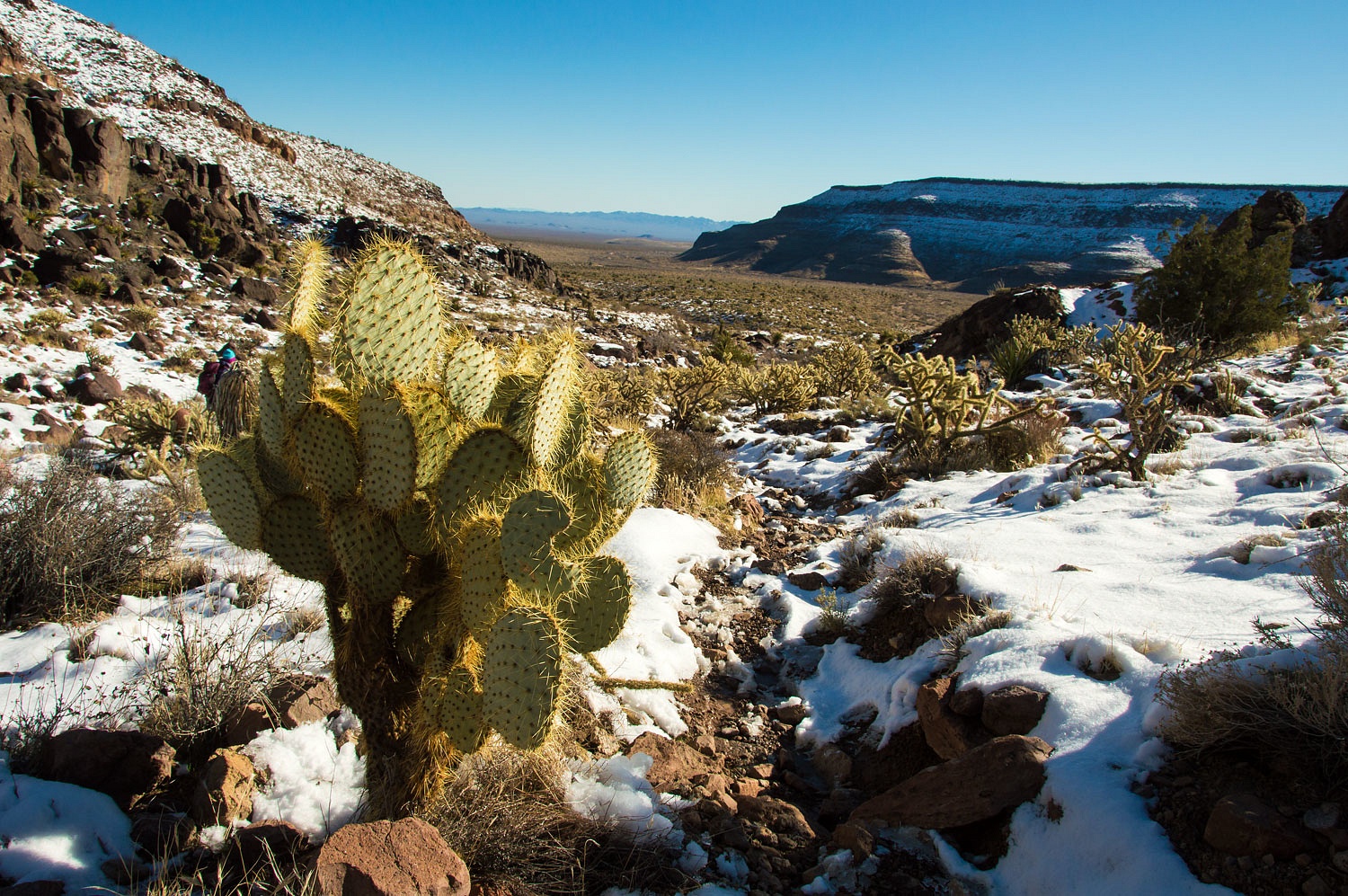
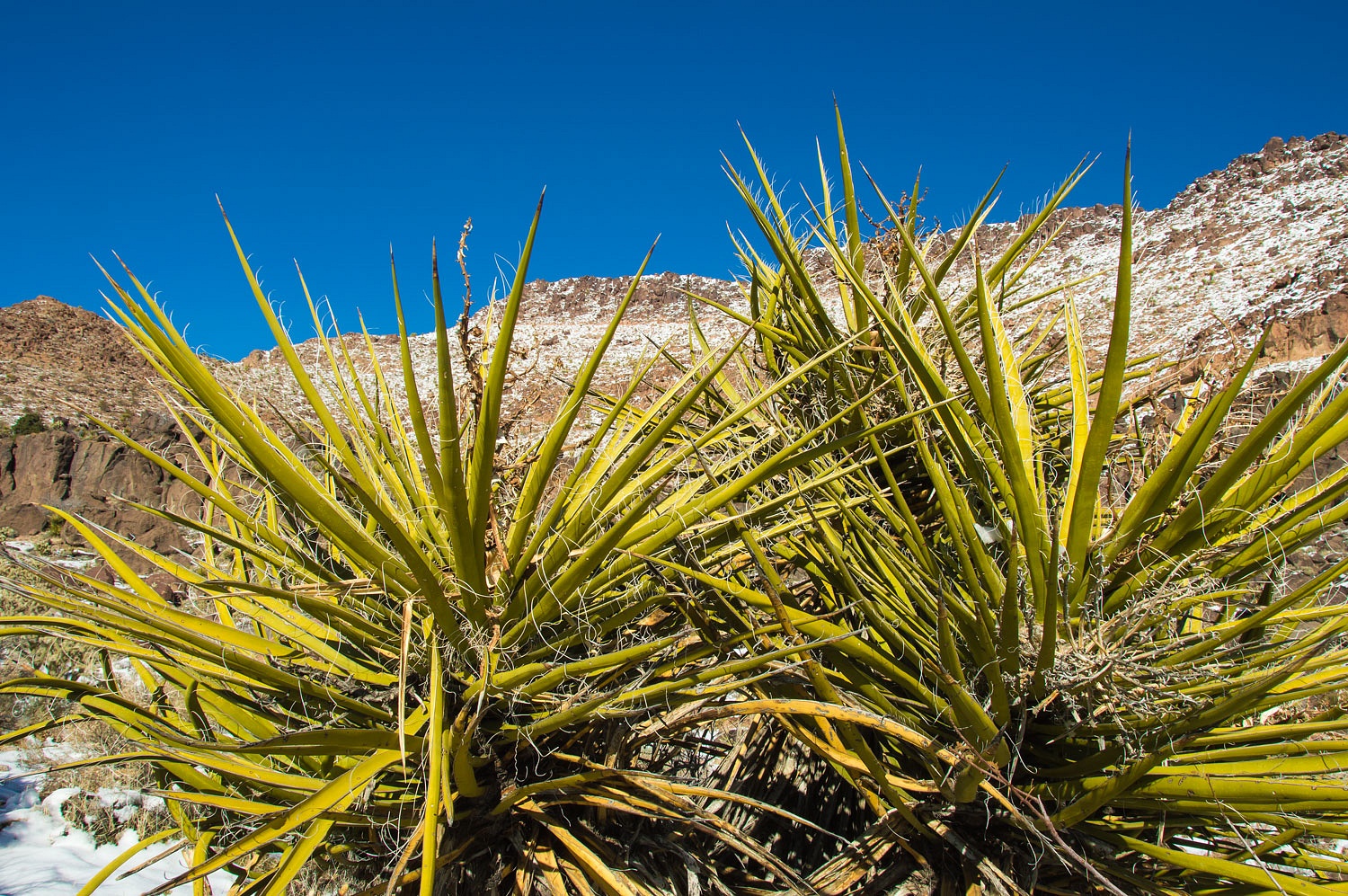
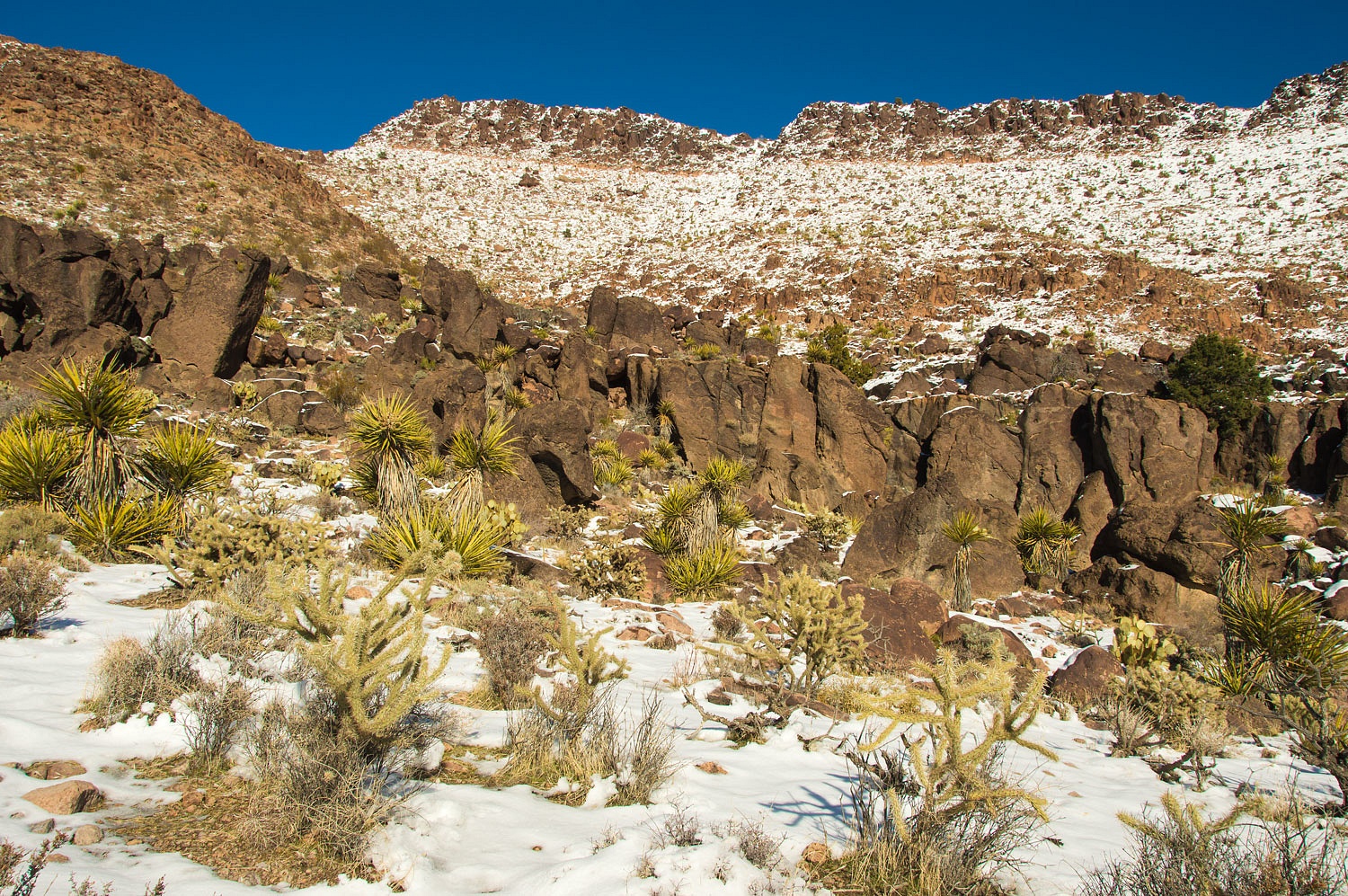
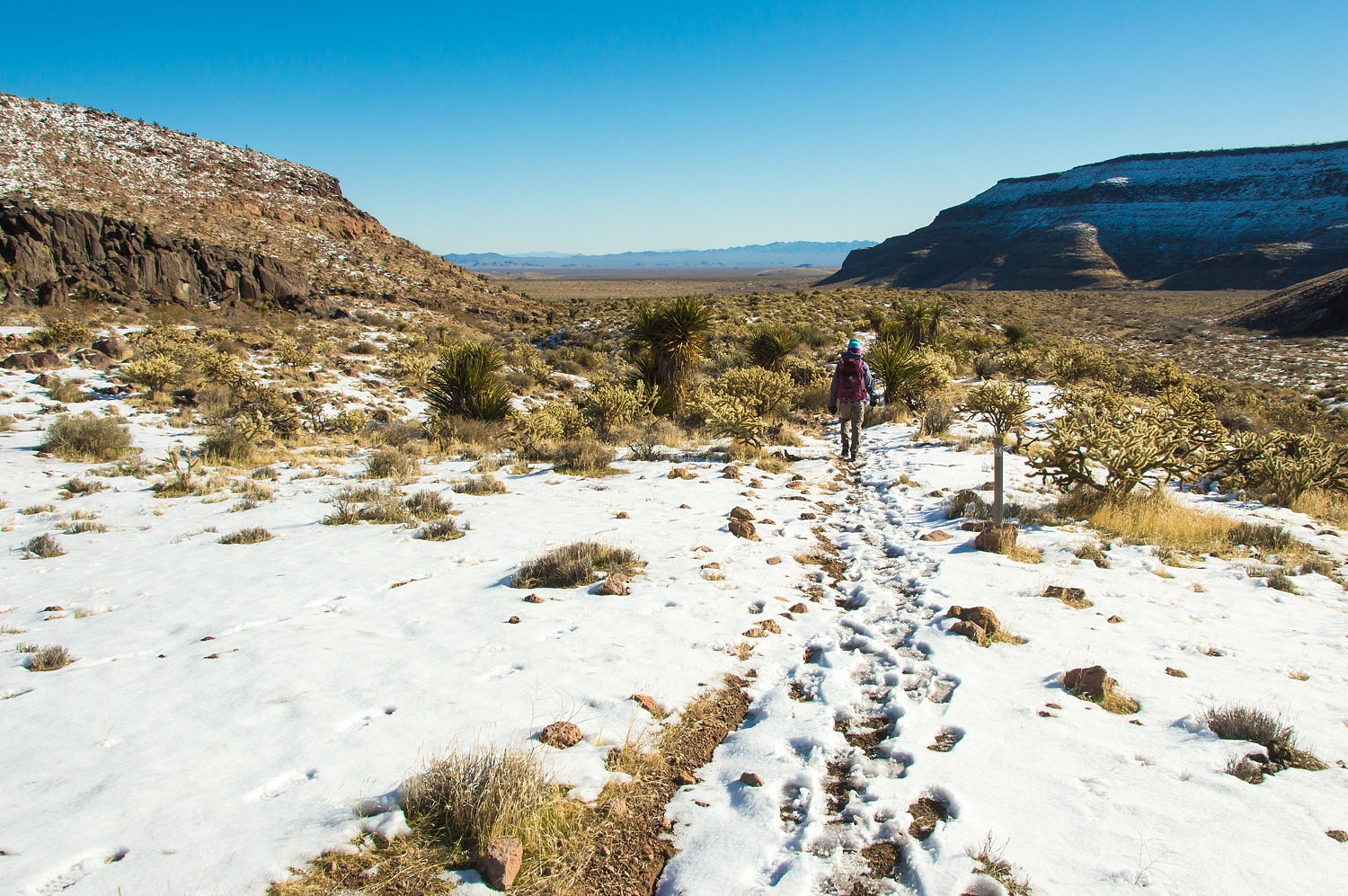
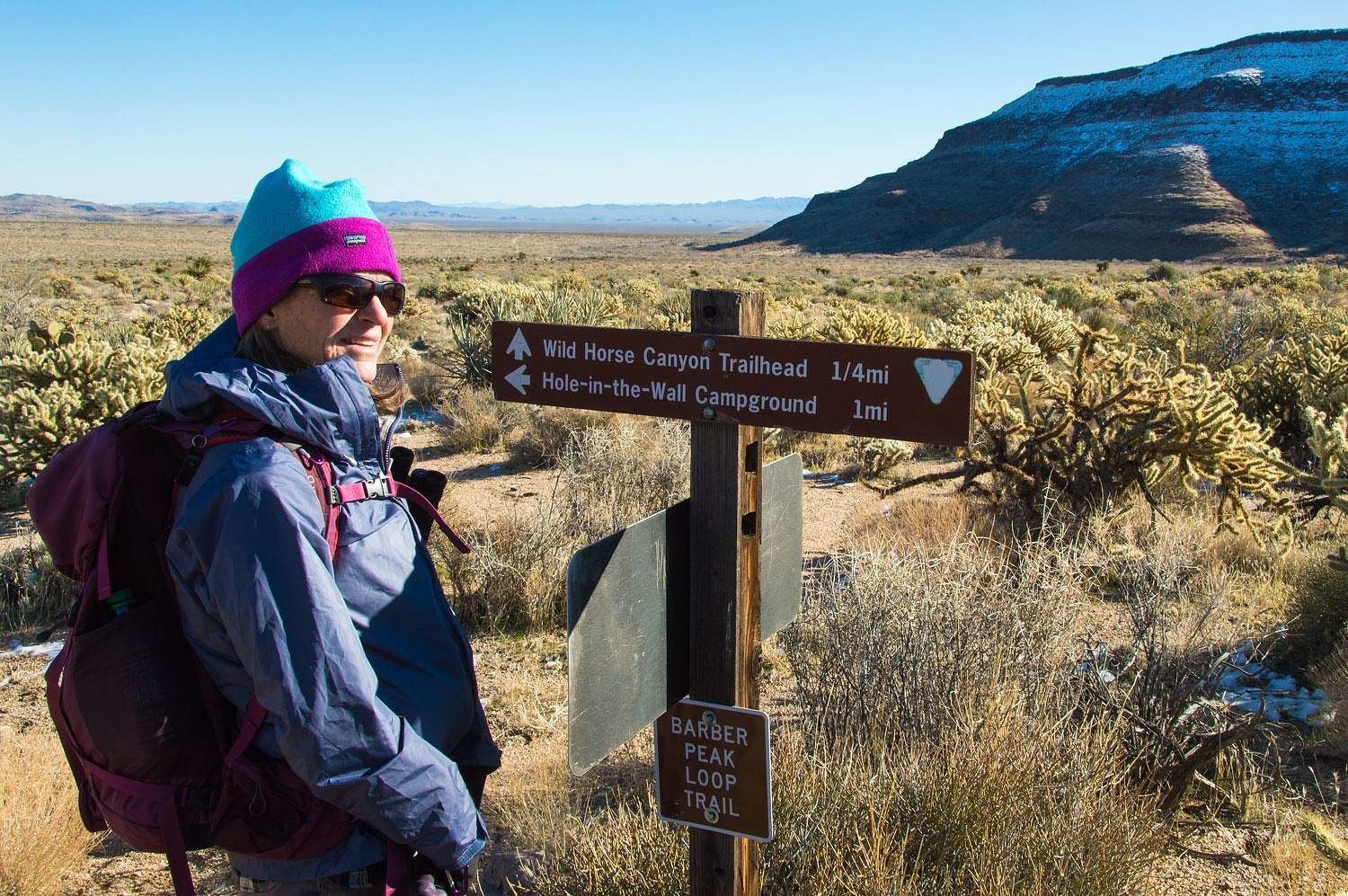
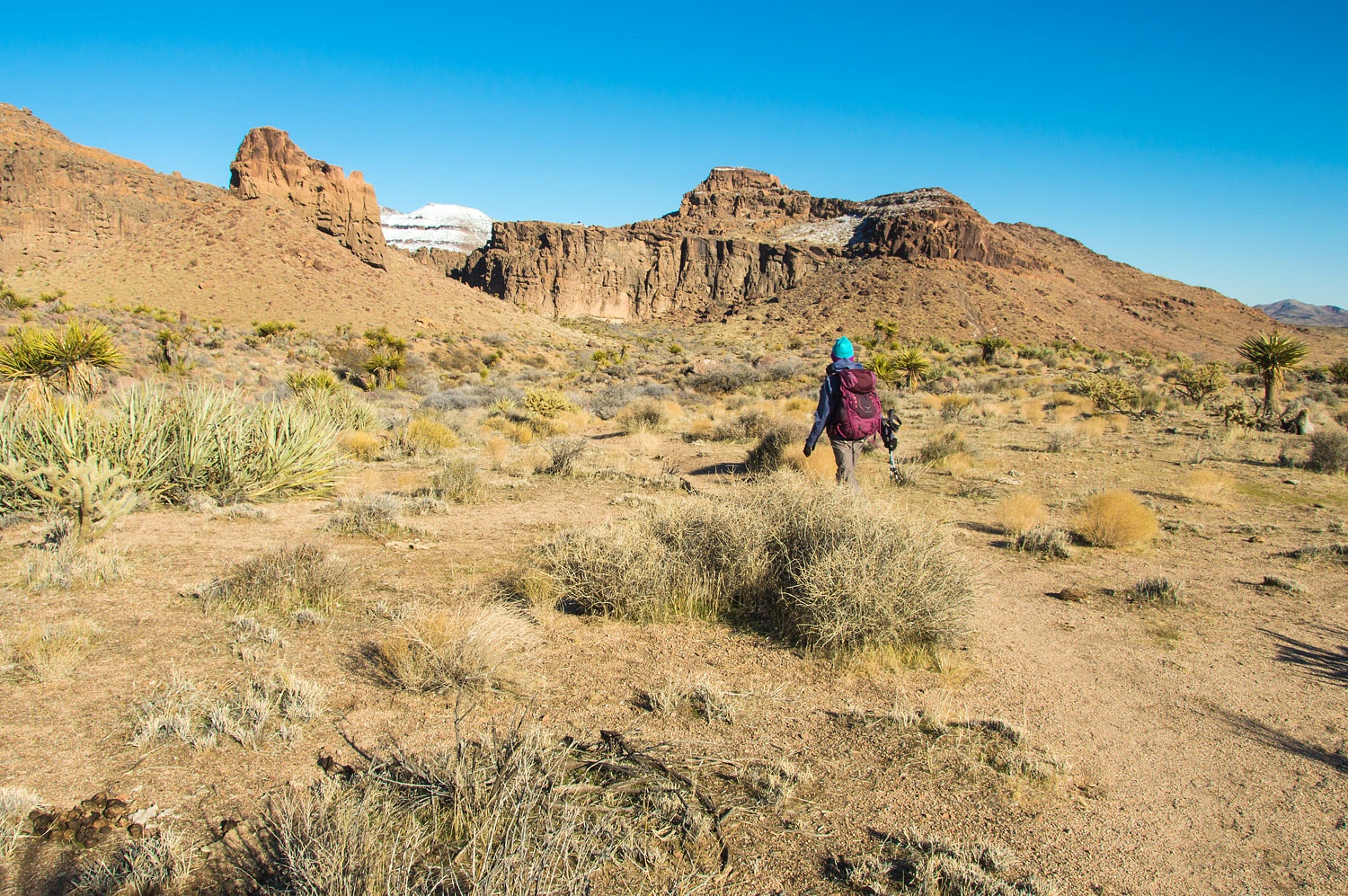
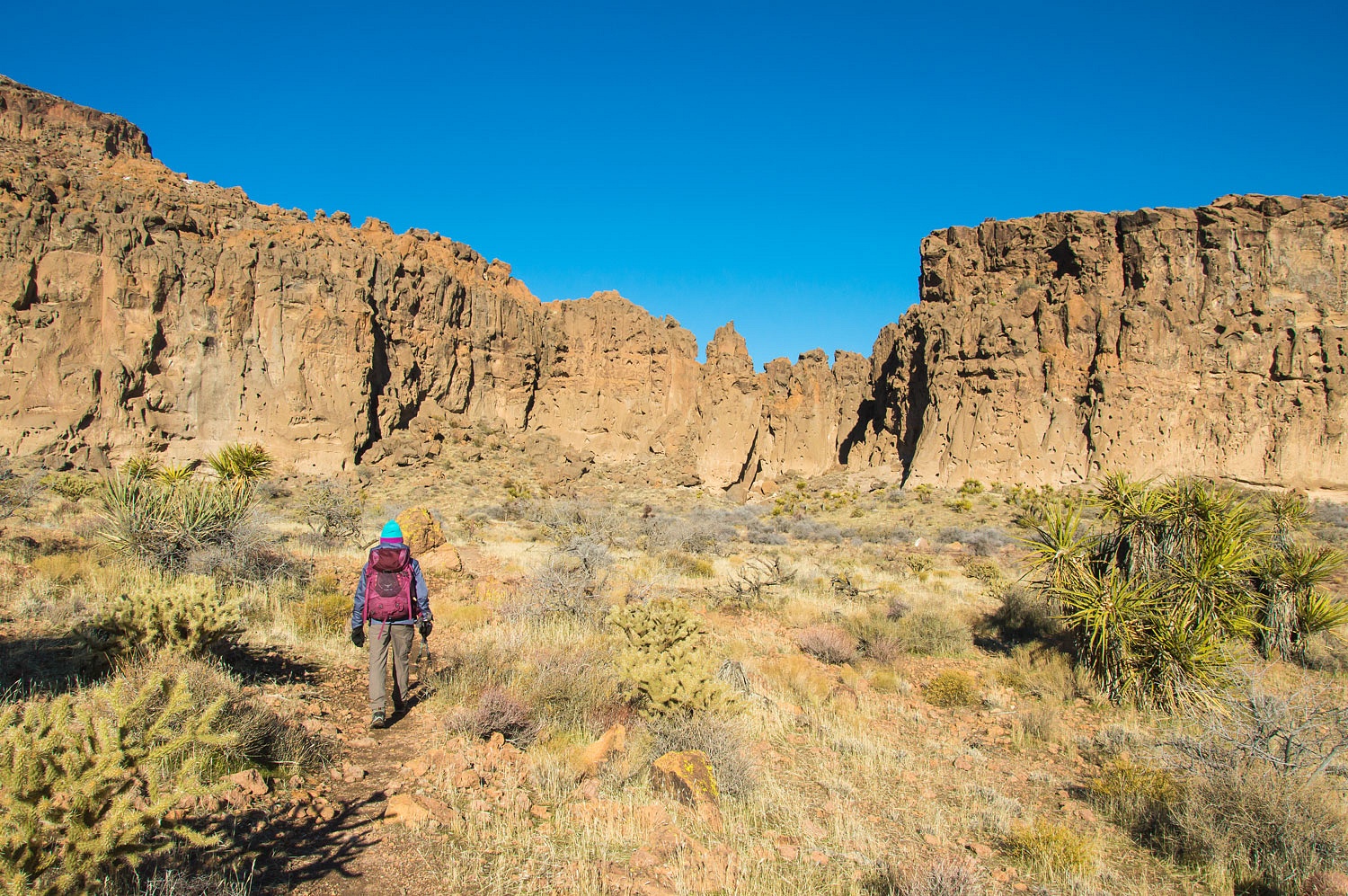
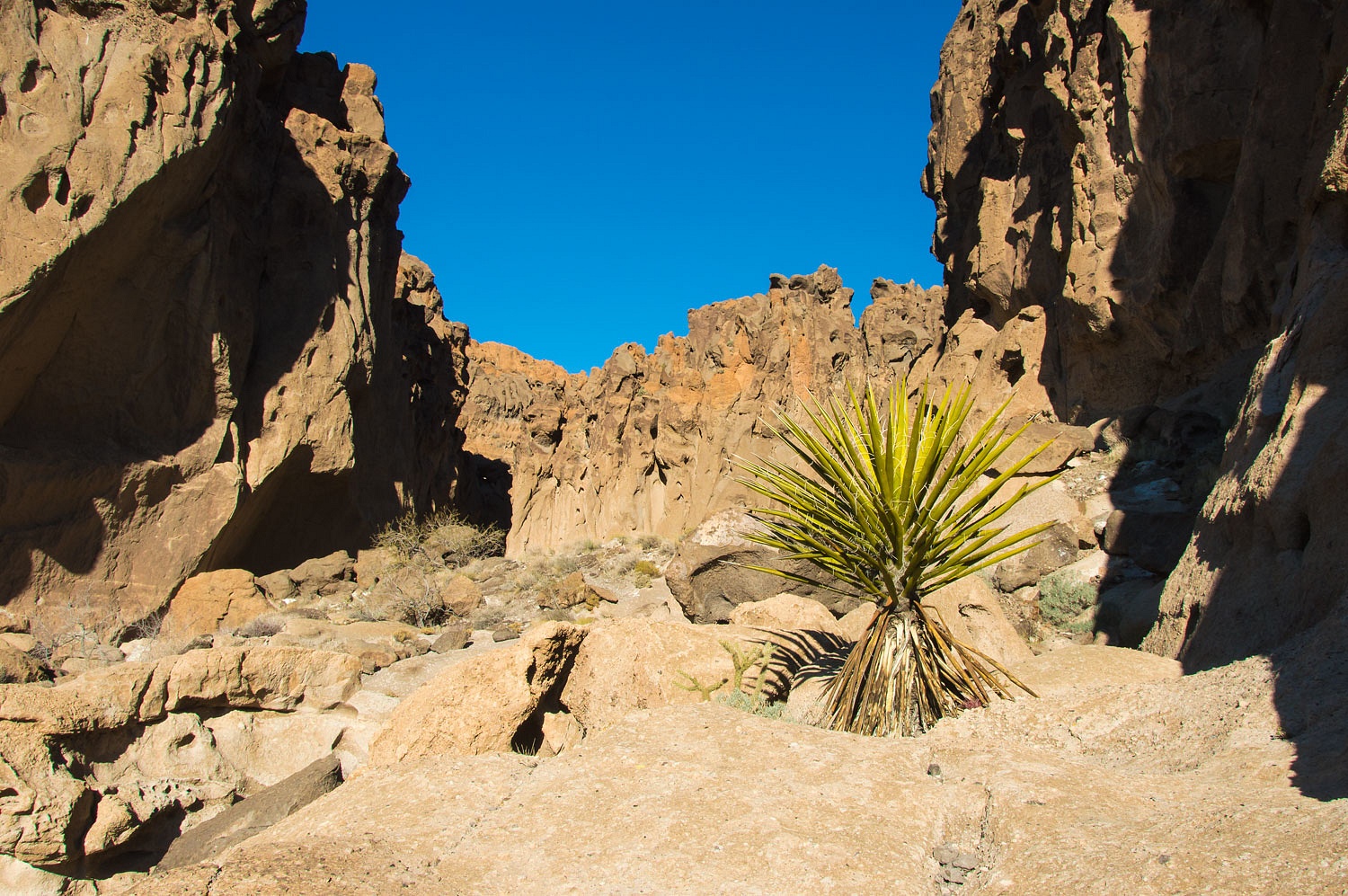
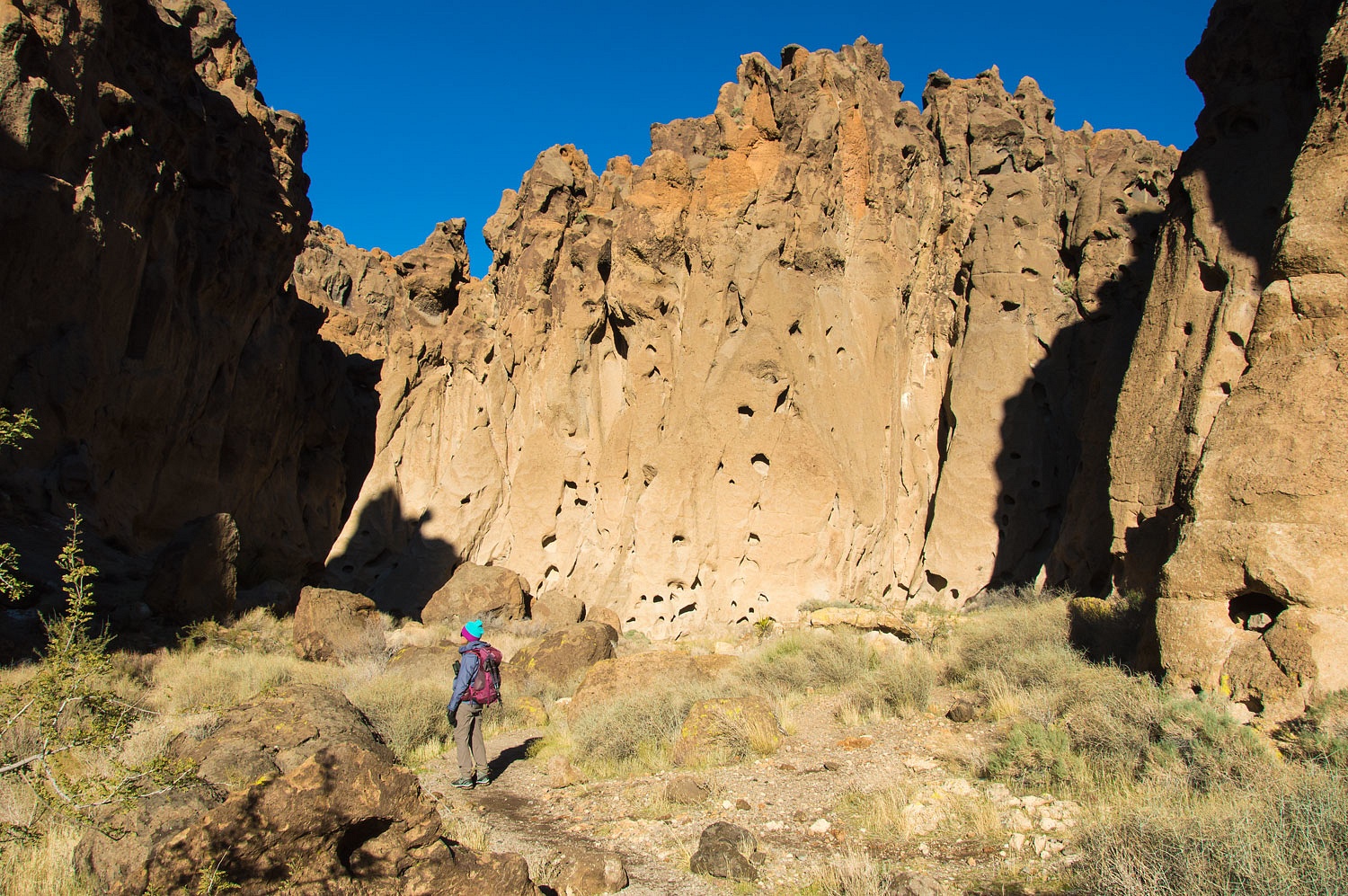
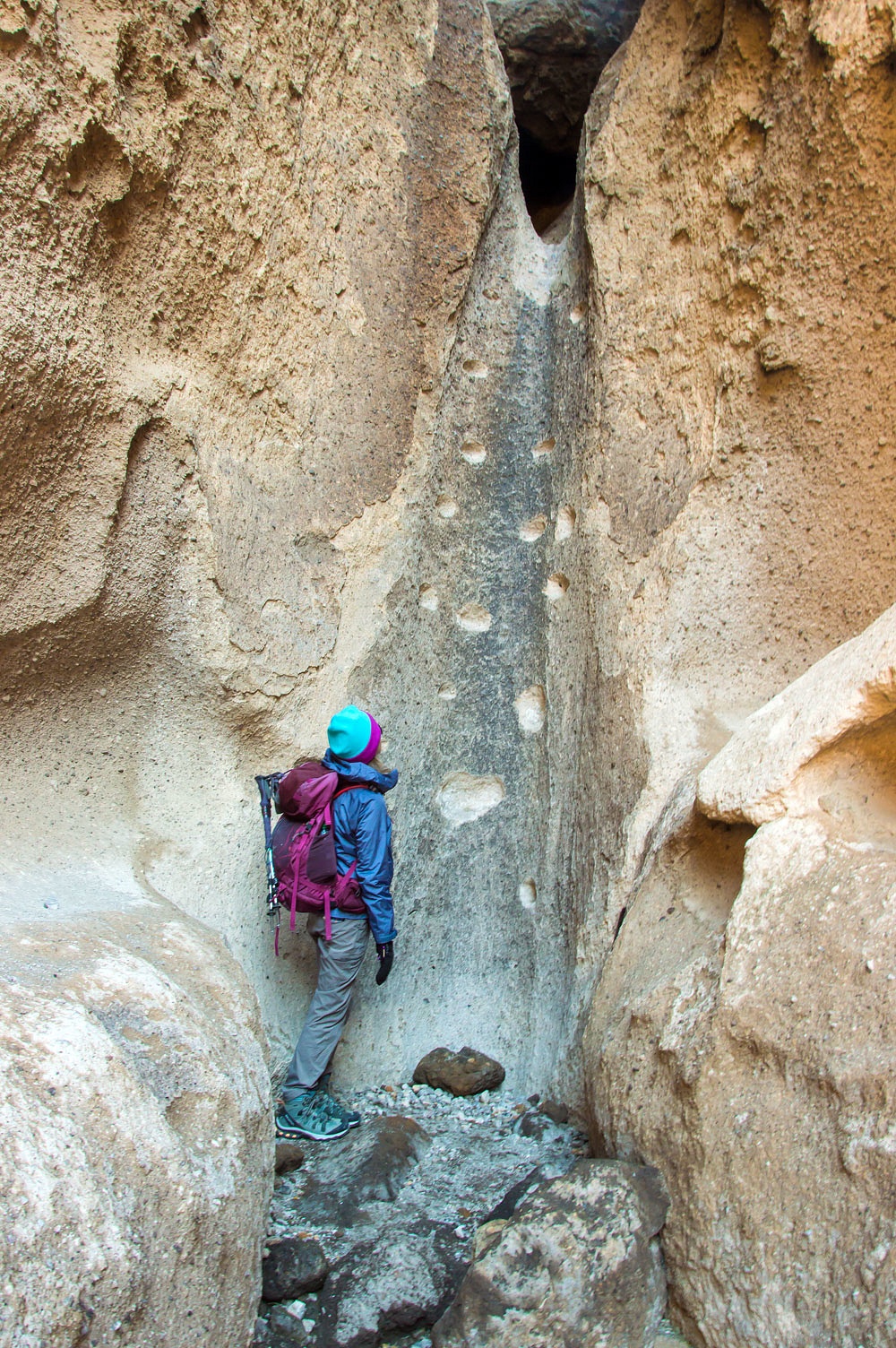
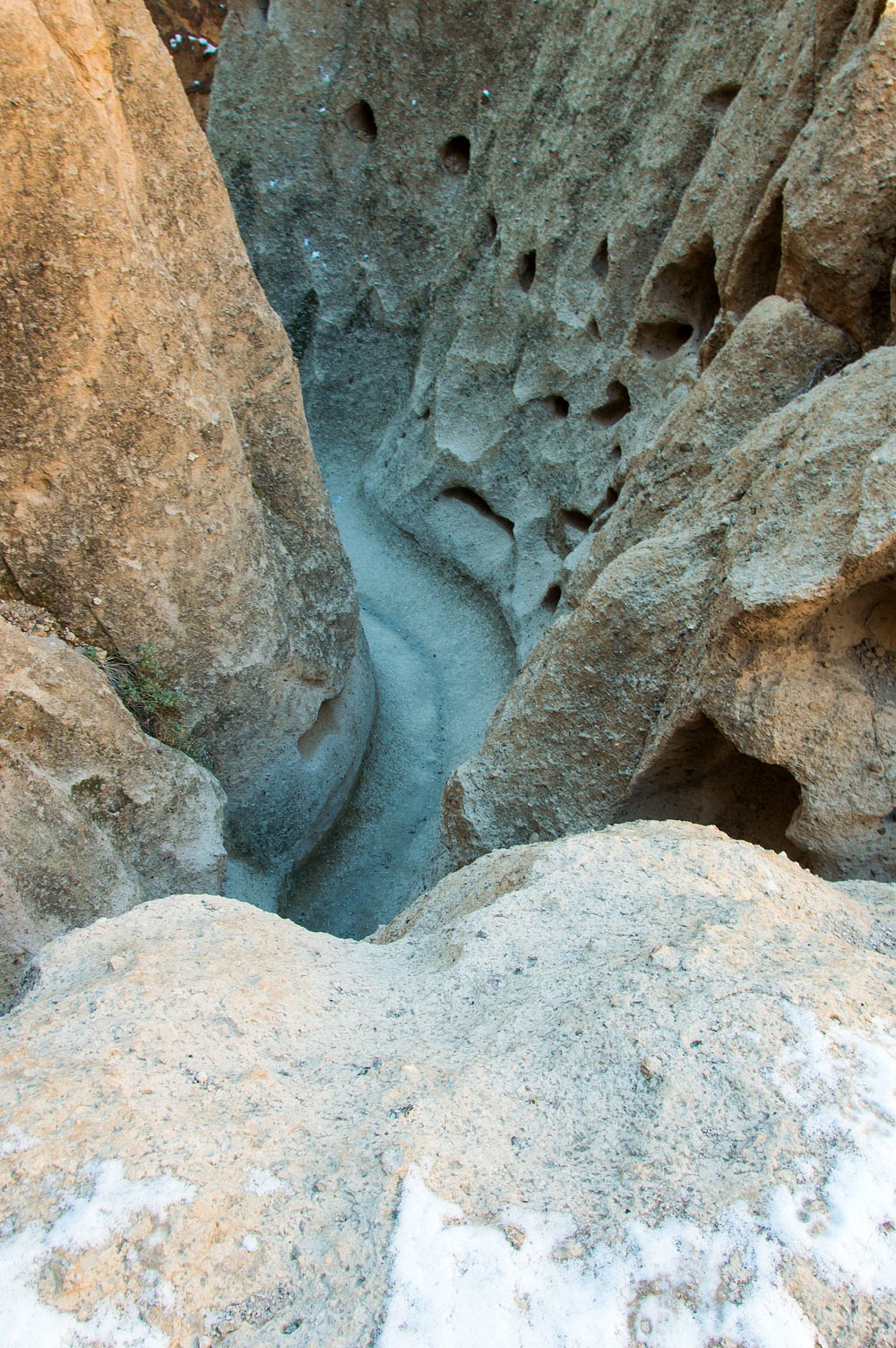
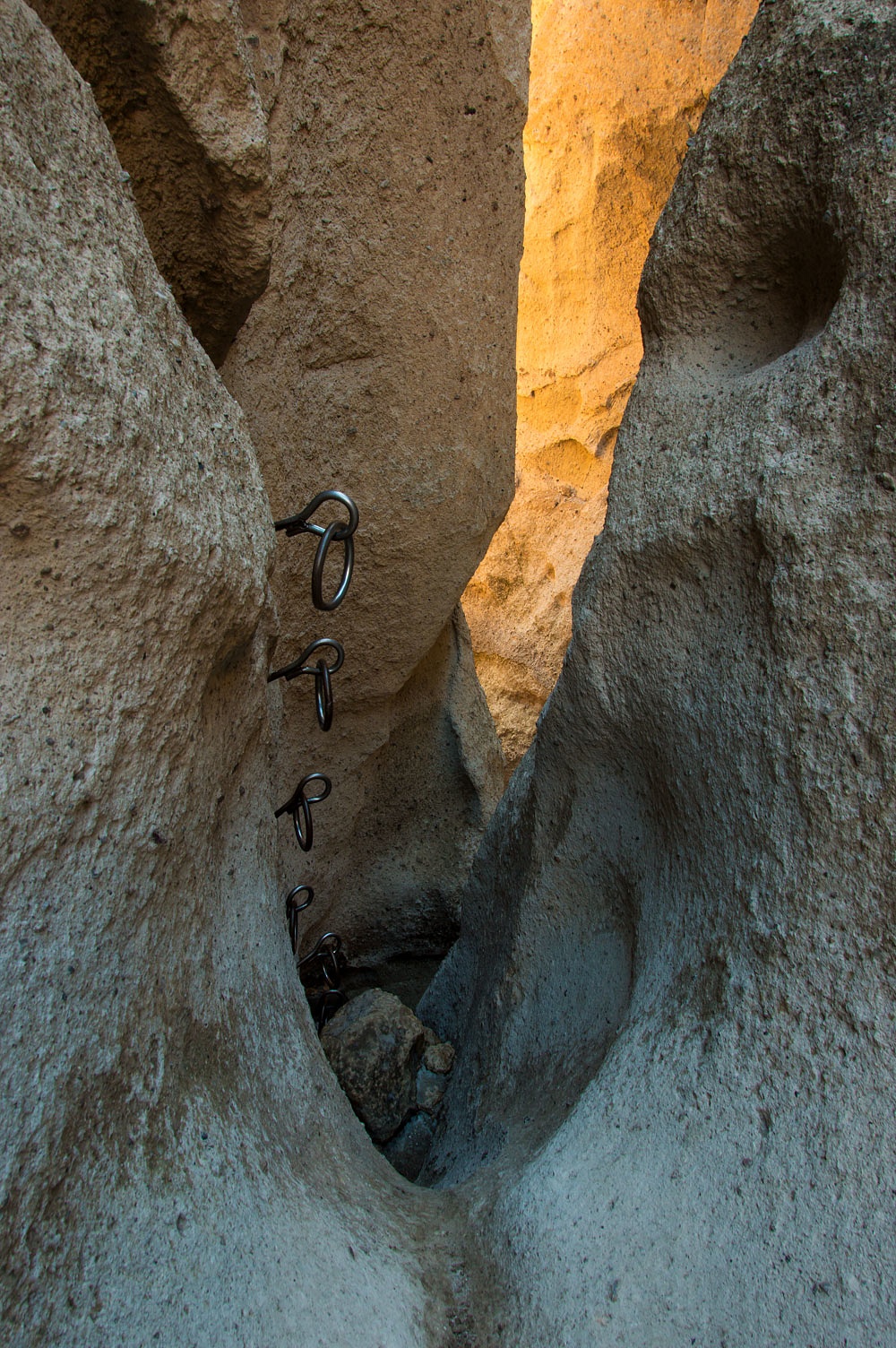
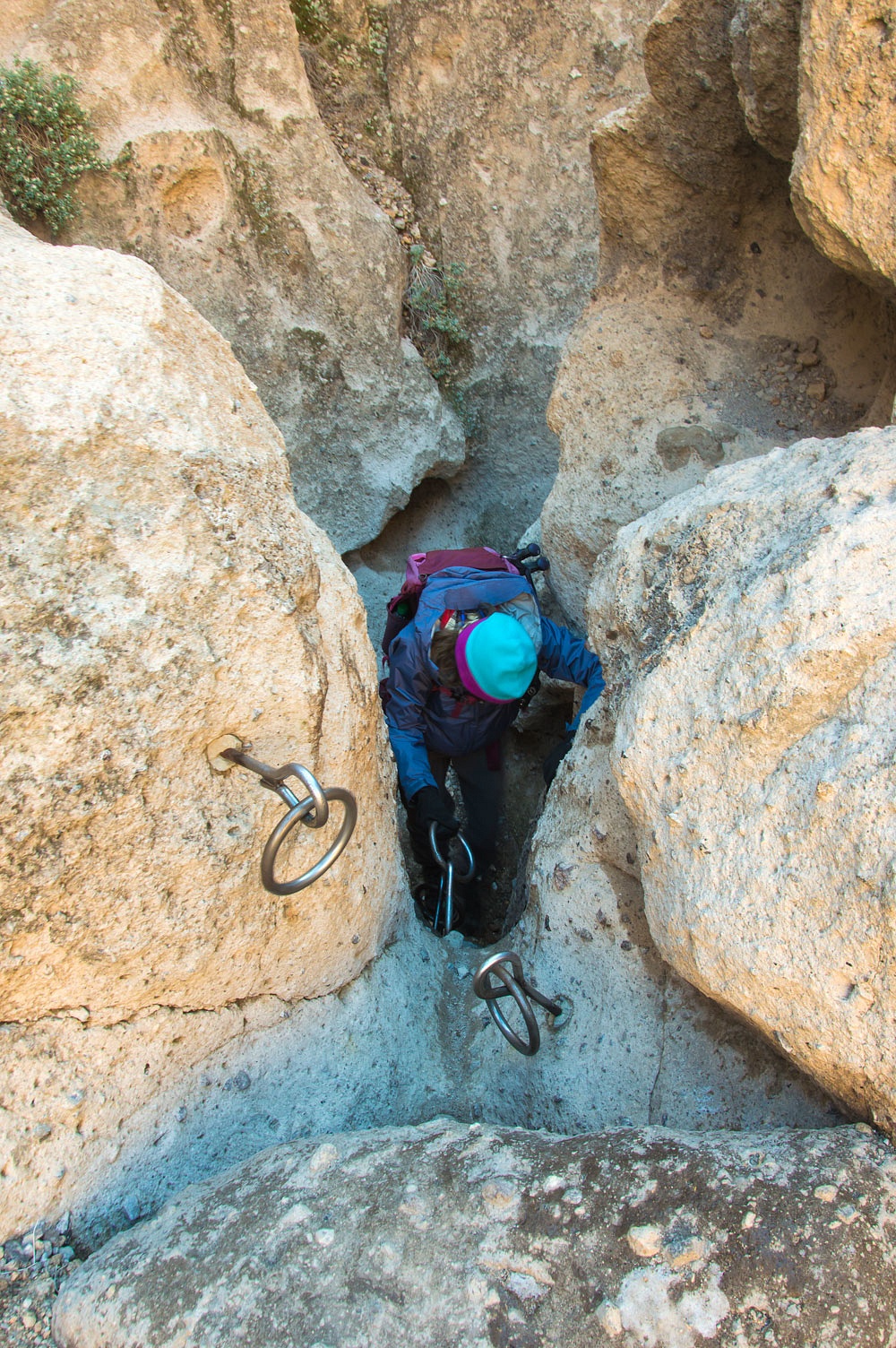
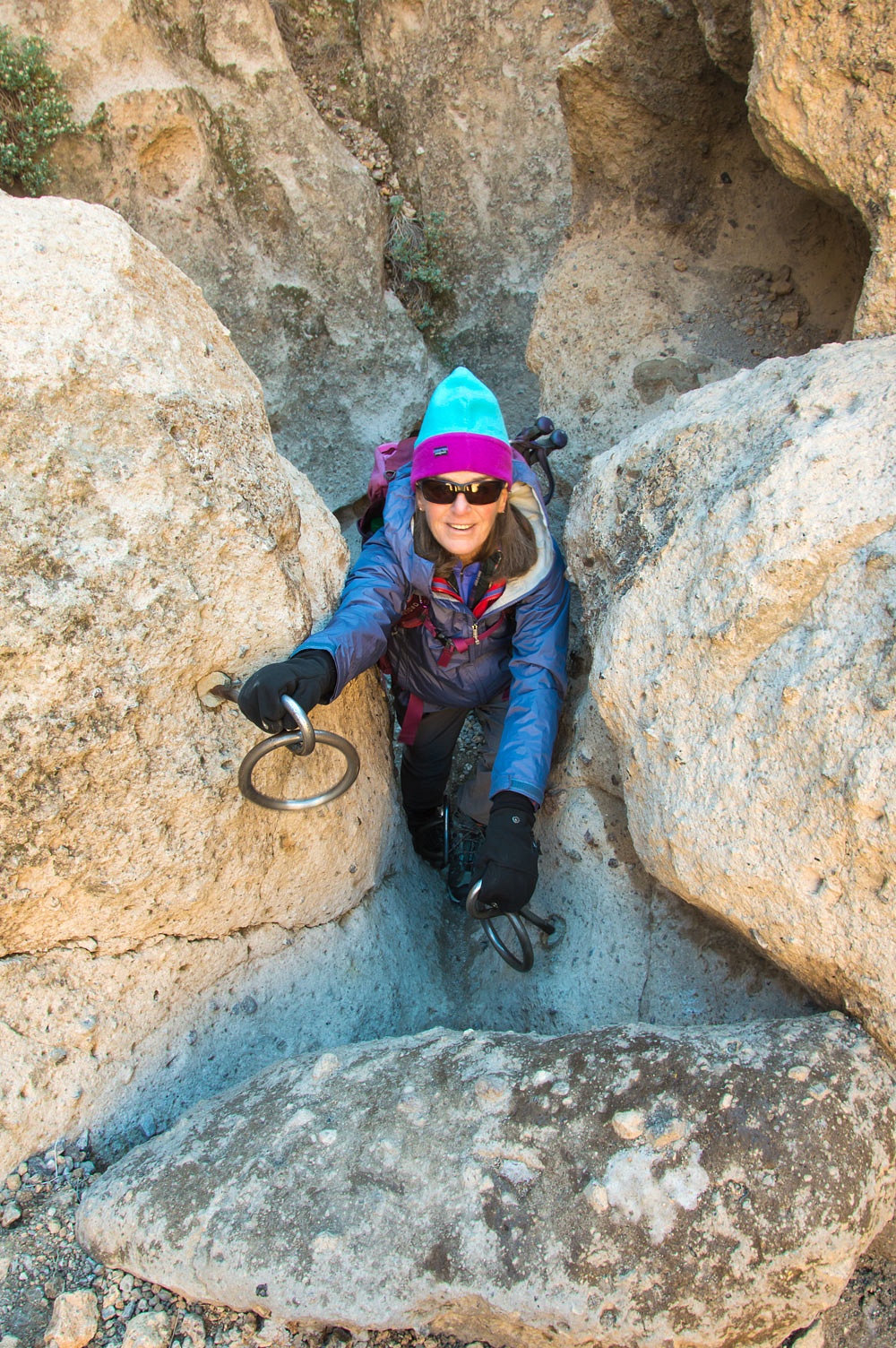
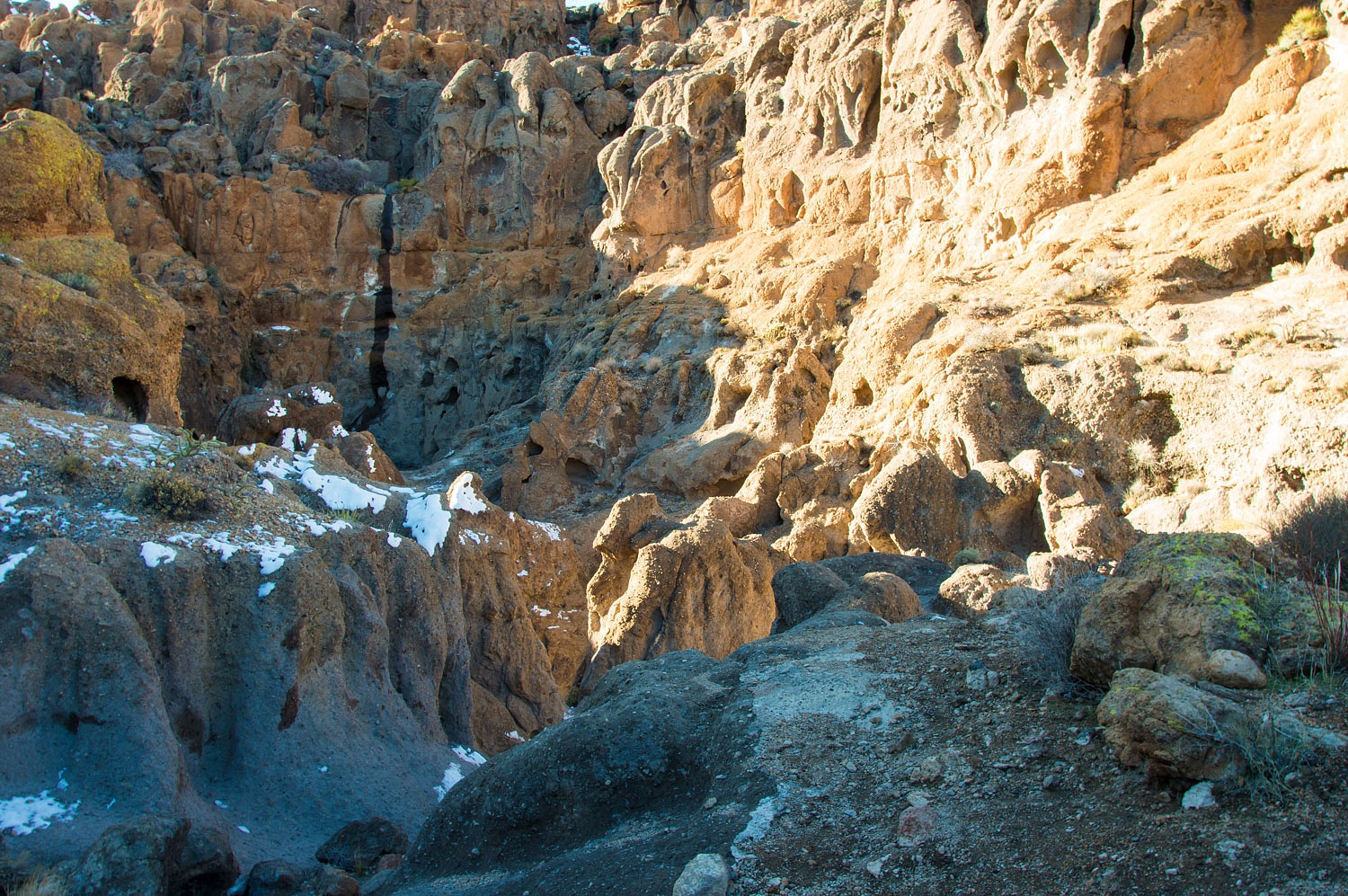
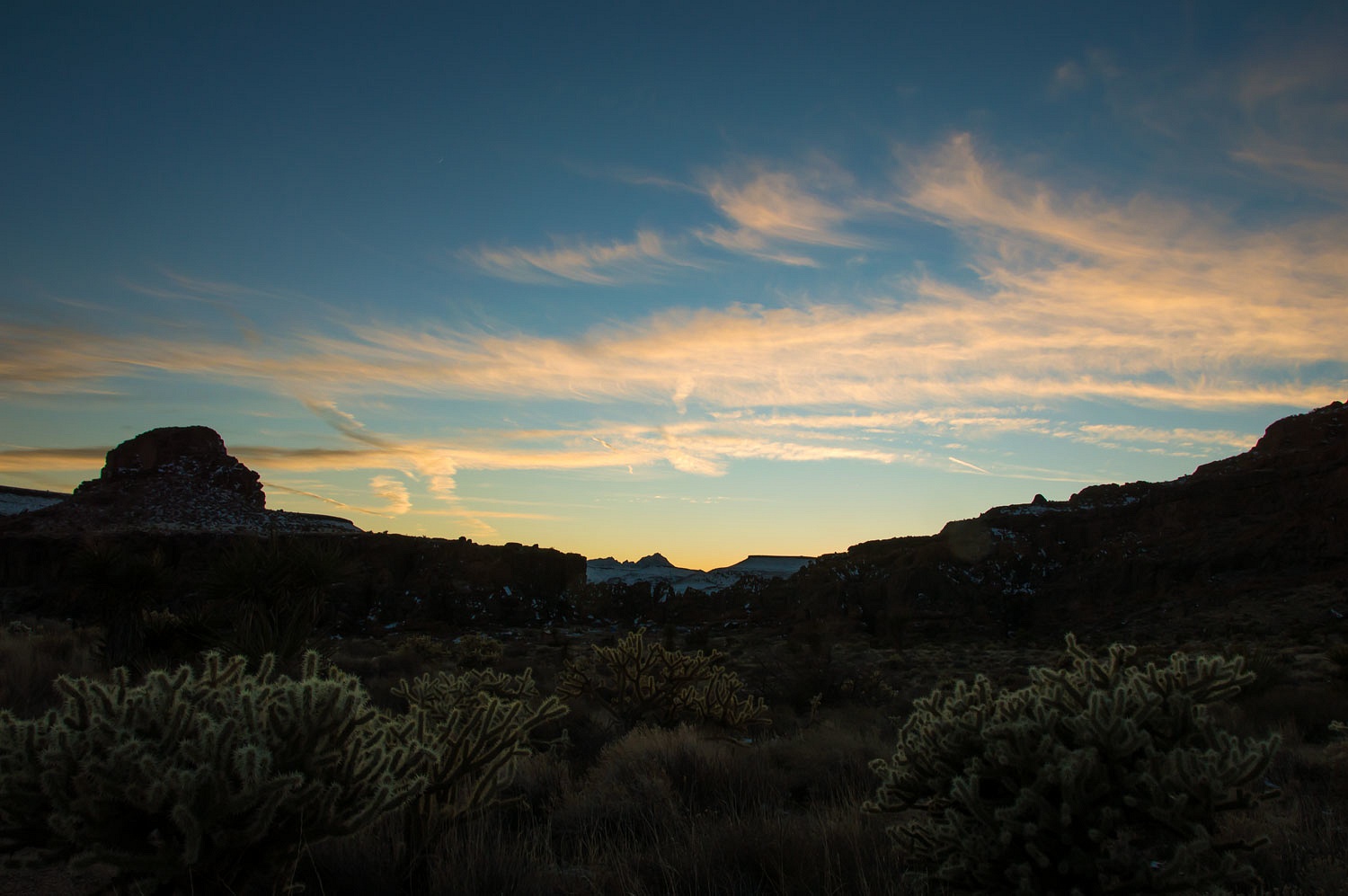
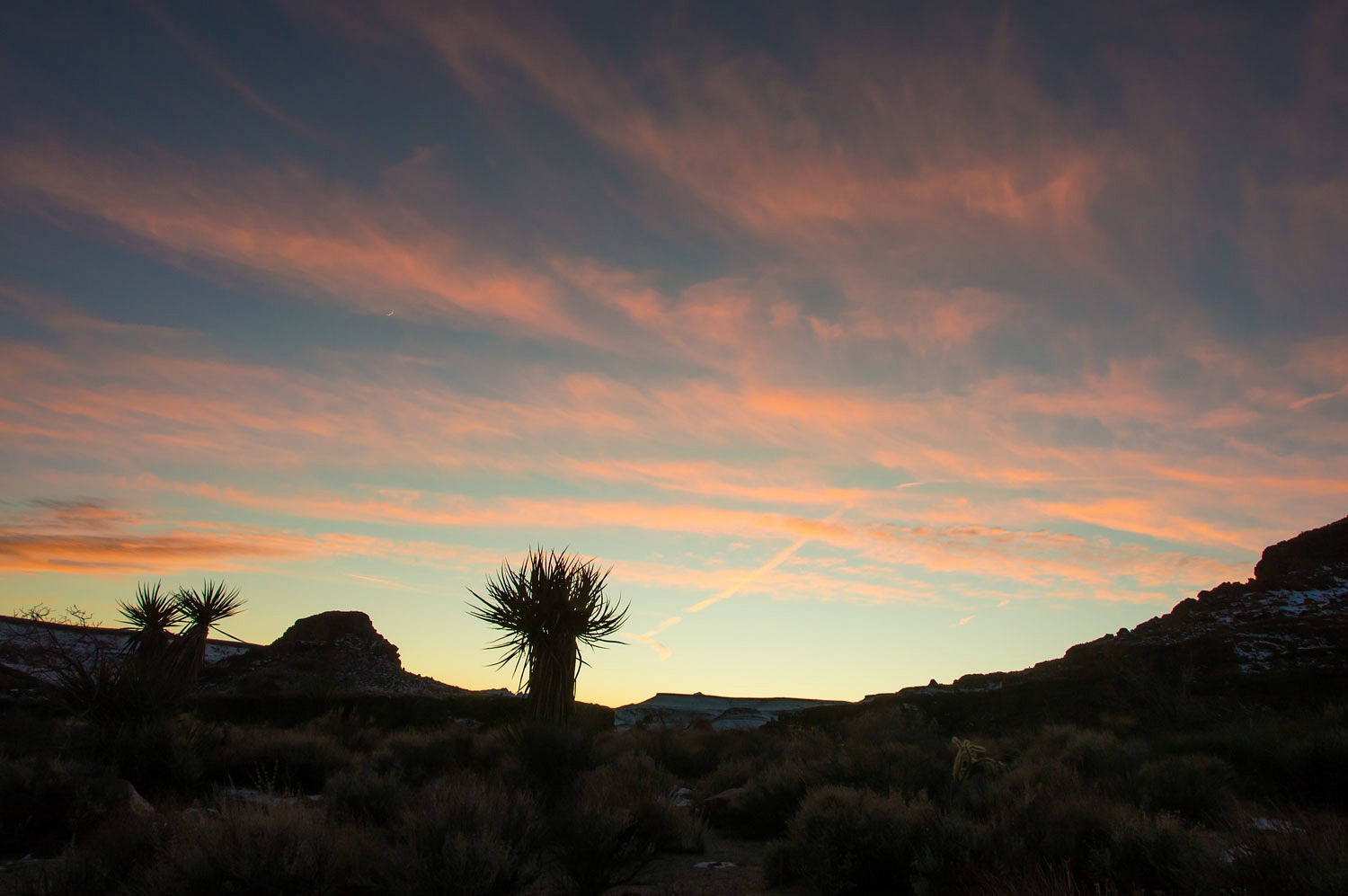
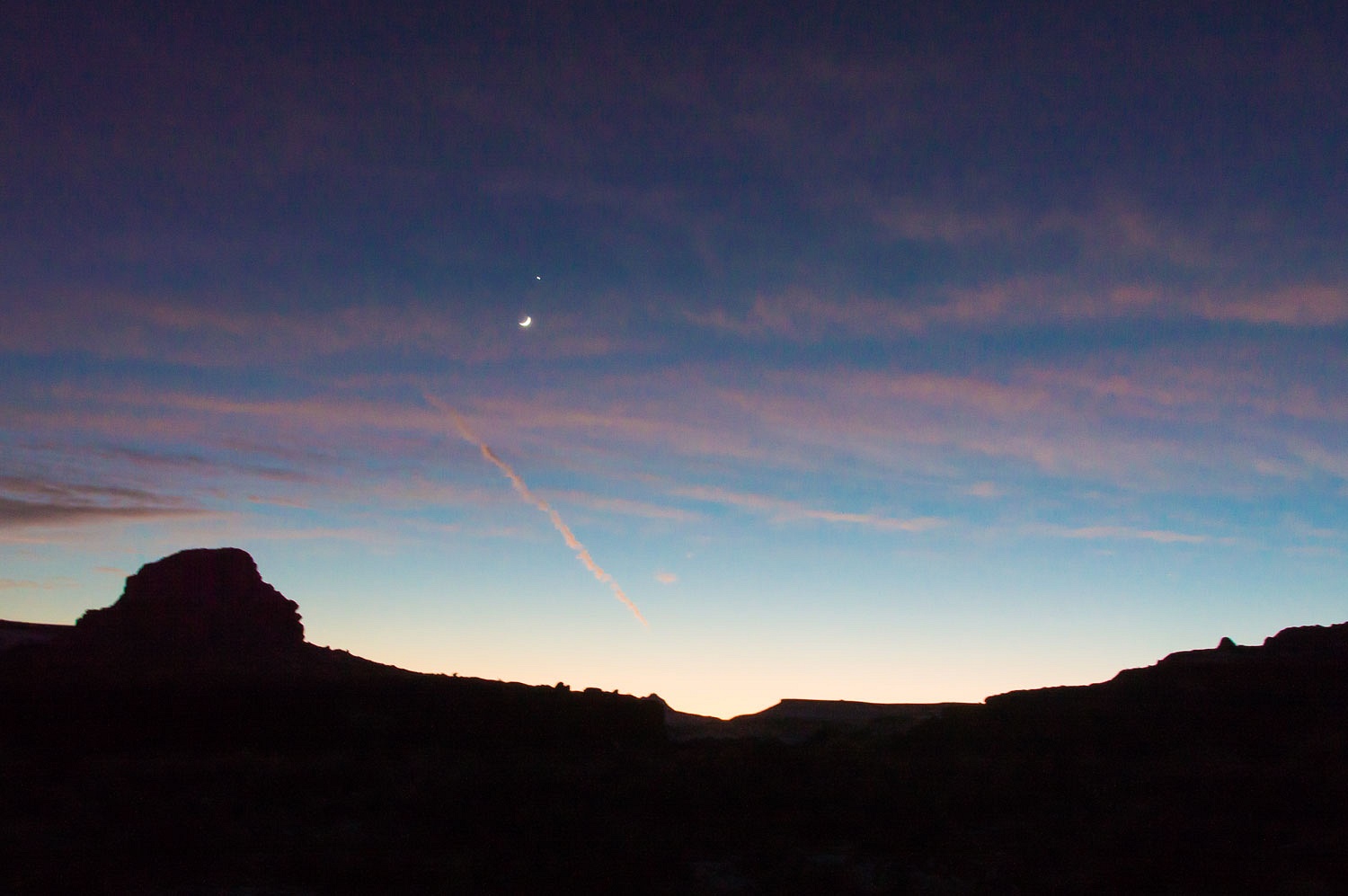
Nice snow at Mojave. We have enjoyed time up in the New York Mtns. and the dispersed camp at White Cross Memorial. Lot's more country to explore there.
ReplyDeleteTaku, thanks for the nice comment! Yes, there's a lot more out there!
DeleteUm! Those are some tiny crevices! Amazing photos!
ReplyDeleteOh, but so much fun. Thanks Diane!
Delete